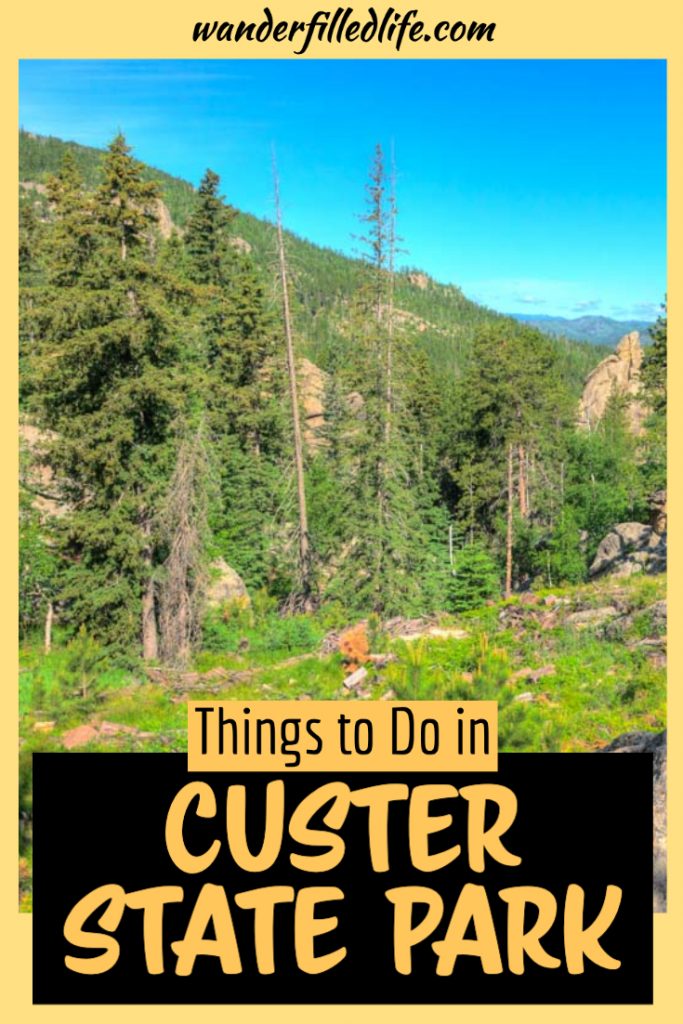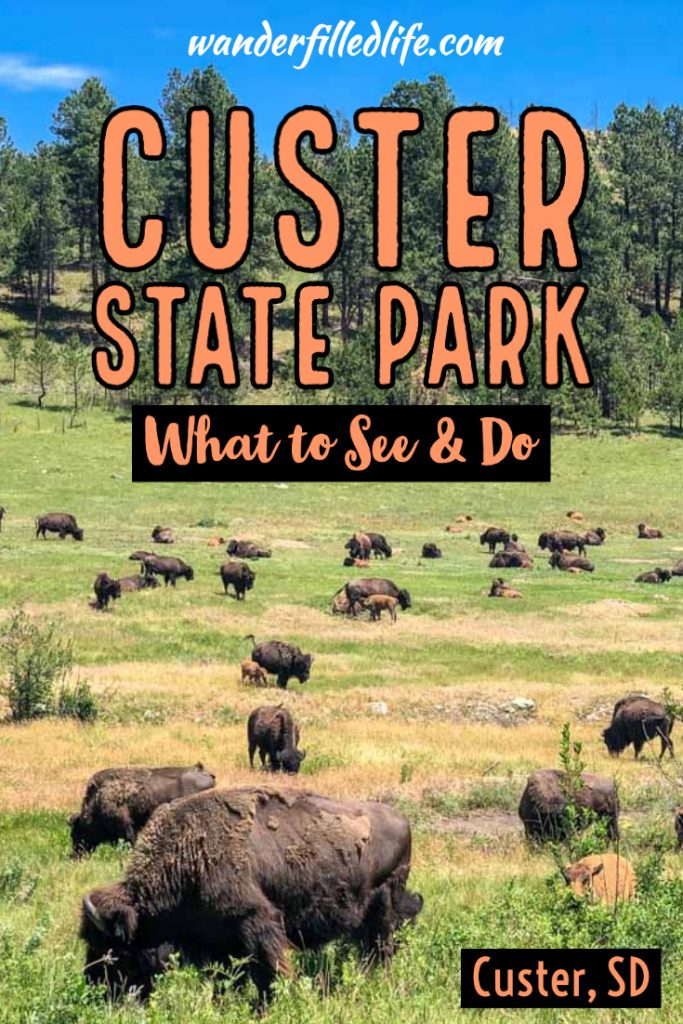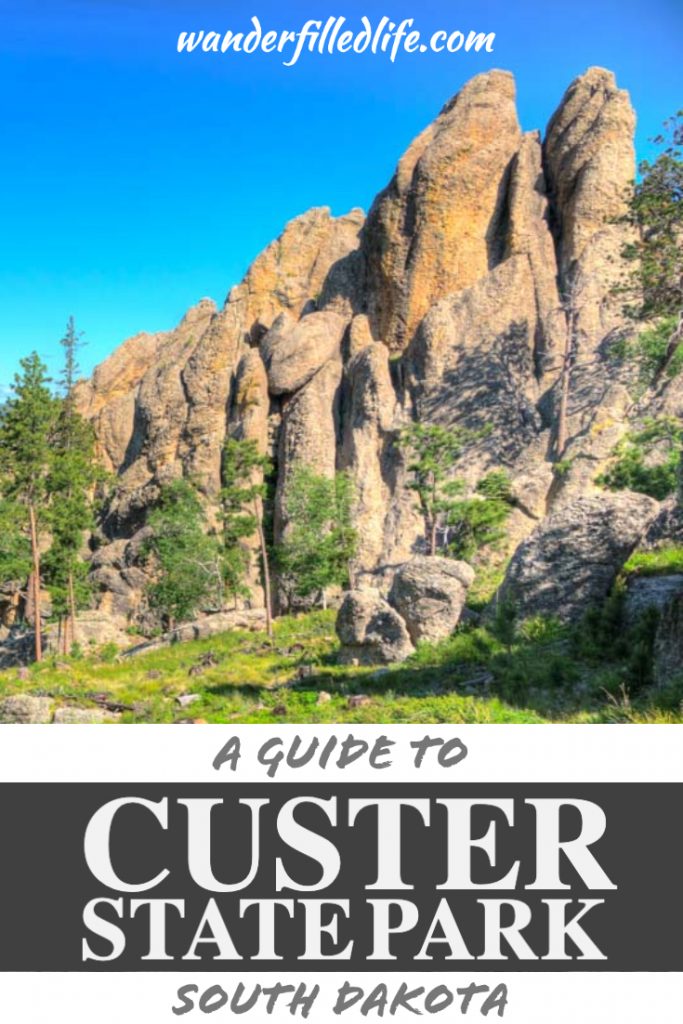Last Updated on February 22, 2024 by Grant
Custer State Park, in the Black Hills of South Dakota, is generally regarded as one of the best state parks in the country. It certainly is one of our favorite state parks. We’ve now visited four times together and there are VERY few places we visit more than once. Unlike other state parks, there are many things to do in Custer State Park that make it well-worth a visit for everyone.
With opportunities for scenic drives, wildlife viewing, hiking, fishing, boating, camping and even fine dining, there truly is something for everyone at Custer State Park. Add in the many other great parks, cities and attractions in the Black Hills and you can easily stay busy for a week or more.
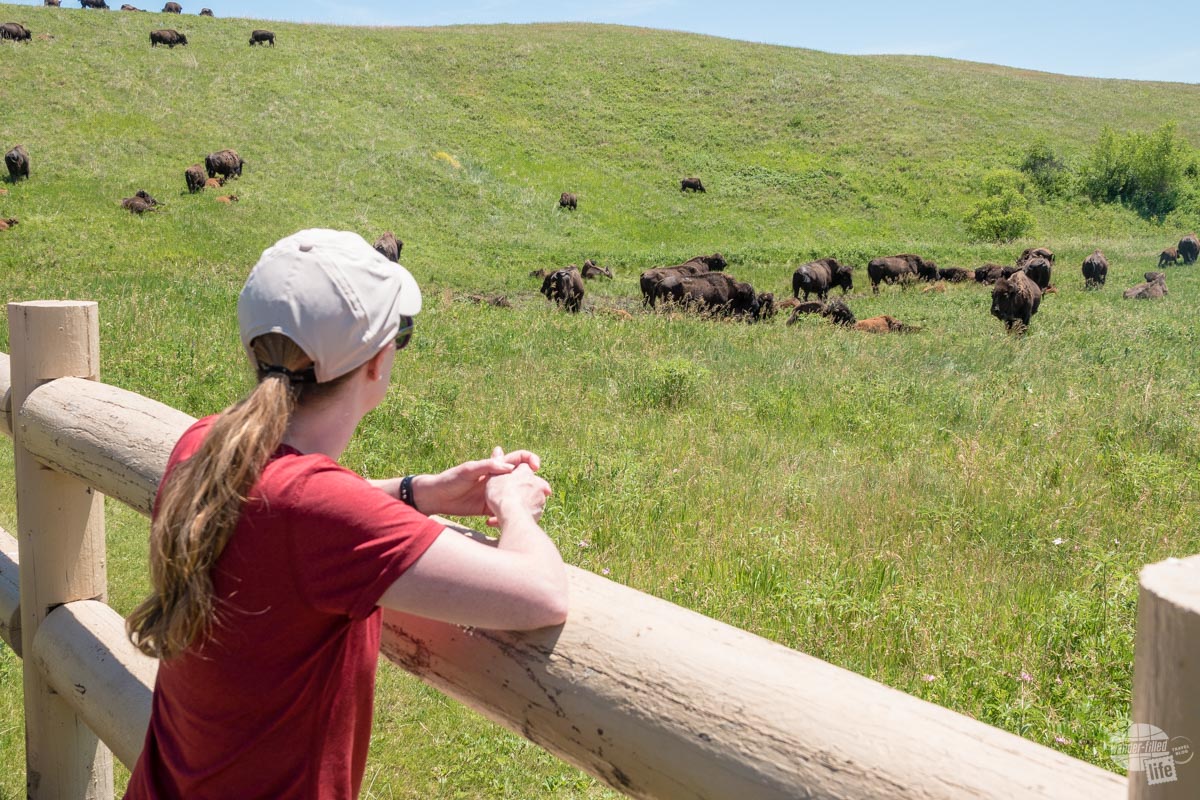
If you’re a national park geek, like us, don’t let the “state park” designation deter you. Custer State Park is every bit as big, scenic and diverse as many of the national parks. In fact, I’ll dare to say it’s “better” than many national parks. Of course, all parks are fantastic in their own way. Custer State Park has many different things to do, making it attractive to many different people.
Whether you’re coming to the Black Hills to see Mount Rushmore National Memorial, Wind Cave National Park or are just passing through Rapid City, Custer State Park certainly needs to be on your itinerary. To help you plan your visit, we’ve compiled all the things to do in Custer State Park and are confident you’ll find something that interests you.
(Disclaimer: When we link to places where you can buy our stuff or places we stayed, we are using special codes that earn us commissions on the sales at no additional cost to you. Please see our Review Policy for more information.)
Custer State Park Basic Information
Custer State Park is located in Custer, SD, about 35 minutes southwest of Rapid City. In this large state park, you’ll find granite peaks, rolling hills, several scenic lakes, plenty of wildlife and quite a few hiking trails. Entrance fees are $20 per vehicle for a 7-day pass. If you’re in the area for more than a week or plan on visiting other South Dakota State Parks, consider getting a state parks annual pass for $36.
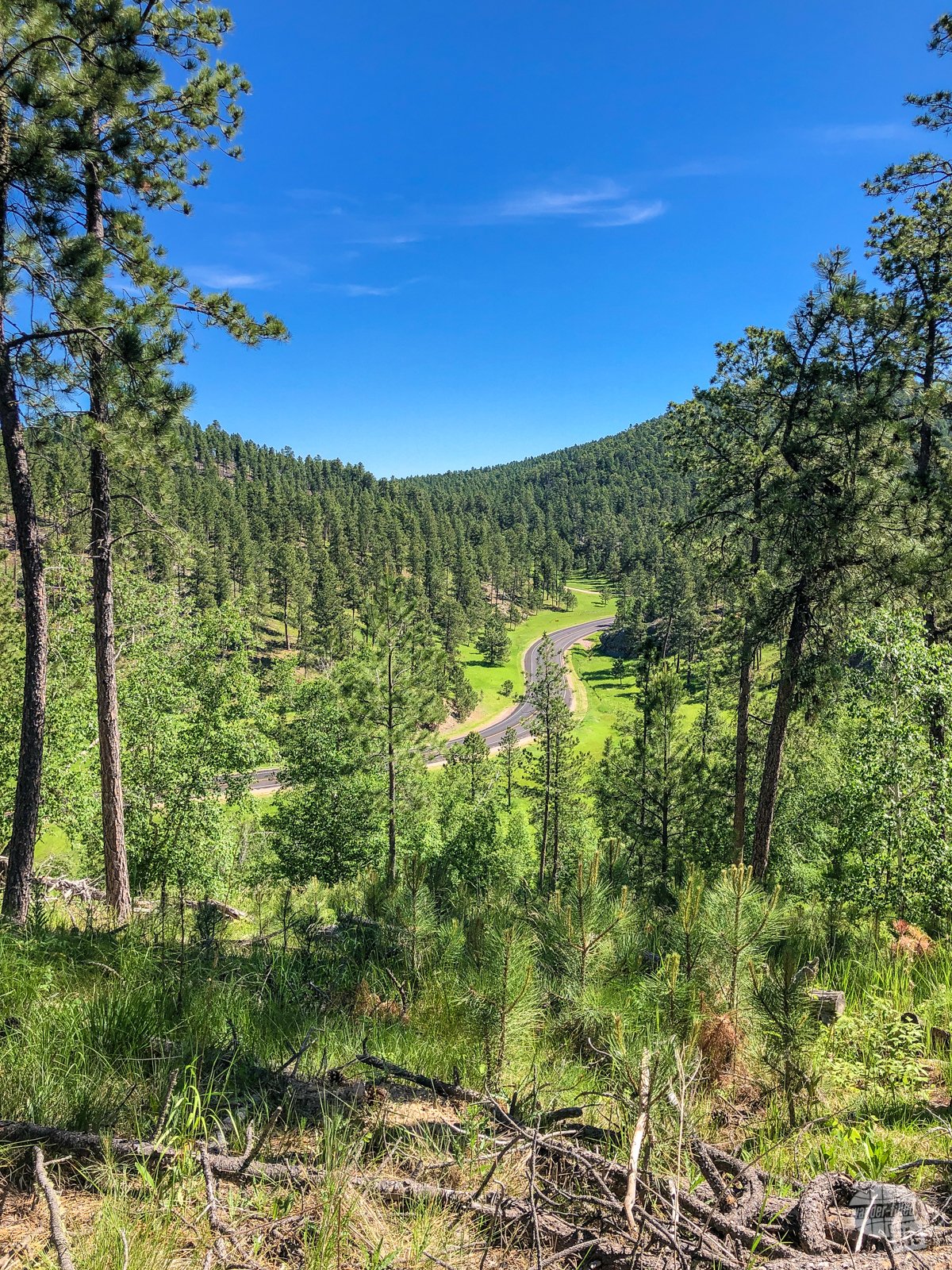
Technically, it is possible to visit Custer State Park without paying the entrance fees. Hwy 16A runs east-west through Custer State Park – no entry fee required to drive that highway. To see the best parts of the park, though, you’ll need to pay for a pass. The entry fee must be paid when driving the Wildlife Loop or Needles Highway, which are some of the best areas of the park.
When you pay at the entrance station, you should receive a copy of Tatanka, the park magazine, which includes a map and information on things to do. If for some reason you don’t get one, be sure to stop at the visitor center to pick one up as soon as possible.
Things to Do in Custer State Park
Whatever outdoor adventures you are looking for, you are sure to find at Custer State Park. With as little as an hour or two, you can see the highlights with a drive through the Wildlife Loop. For those with more time, there are plenty of things to do in Custer State Park to keep you busy for a full day or more.
Drive the Wildlife Loop
If you only do one thing at Custer State Park, it should be to drive the Wildlife Loop. Looping off US Hwy 16A on the east side of the park, around to SD Hwy 87 on the west side of the park, the Wildlife Loop certainly lives up to its name.
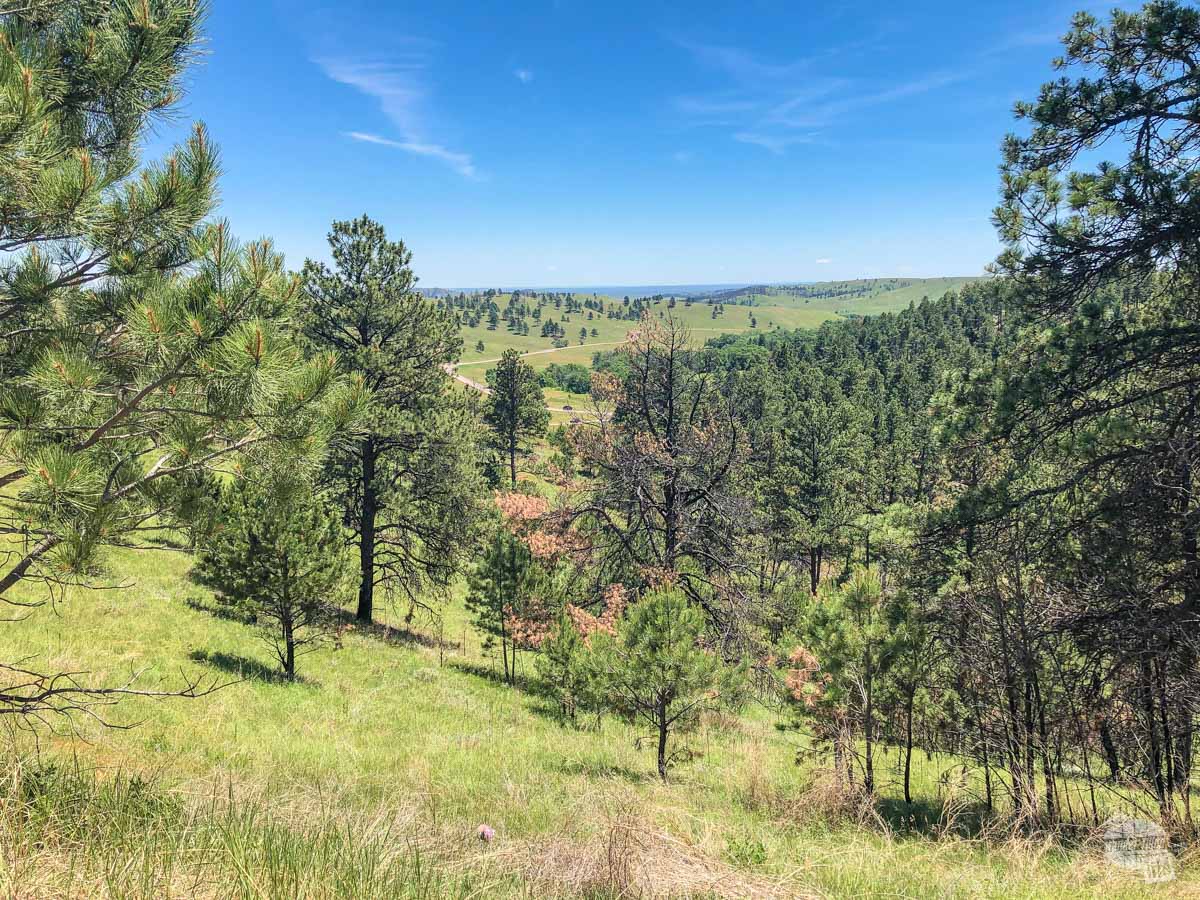
As home to the the second-largest bison herd in the US, you’re almost certain to see bison at Custer State Park. The Wildlife Loop is where you are most likely to find them. Also calling the Wildlife Loop home are the park’s iconic burros.
Give yourself at least an hour to drive the 18-mile road, though you can easily take longer than that if you run into the bison herd, burros, pronghorn antelope or just stop to take in the views or do some hiking.
Bison
While bison can be found throughout the park, you’ll usually find the majority of the herd, which numbers about 1,300, along the Wildlife Loop. You won’t generally find them all in one place, either. Usually, there are two or three large groups scattered around. Additionally, the adult males (bulls) generally do NOT stay with the herd, so keep an eye out as you drive for these large, lonely guys – when lying down they sometimes just look like big rocks!
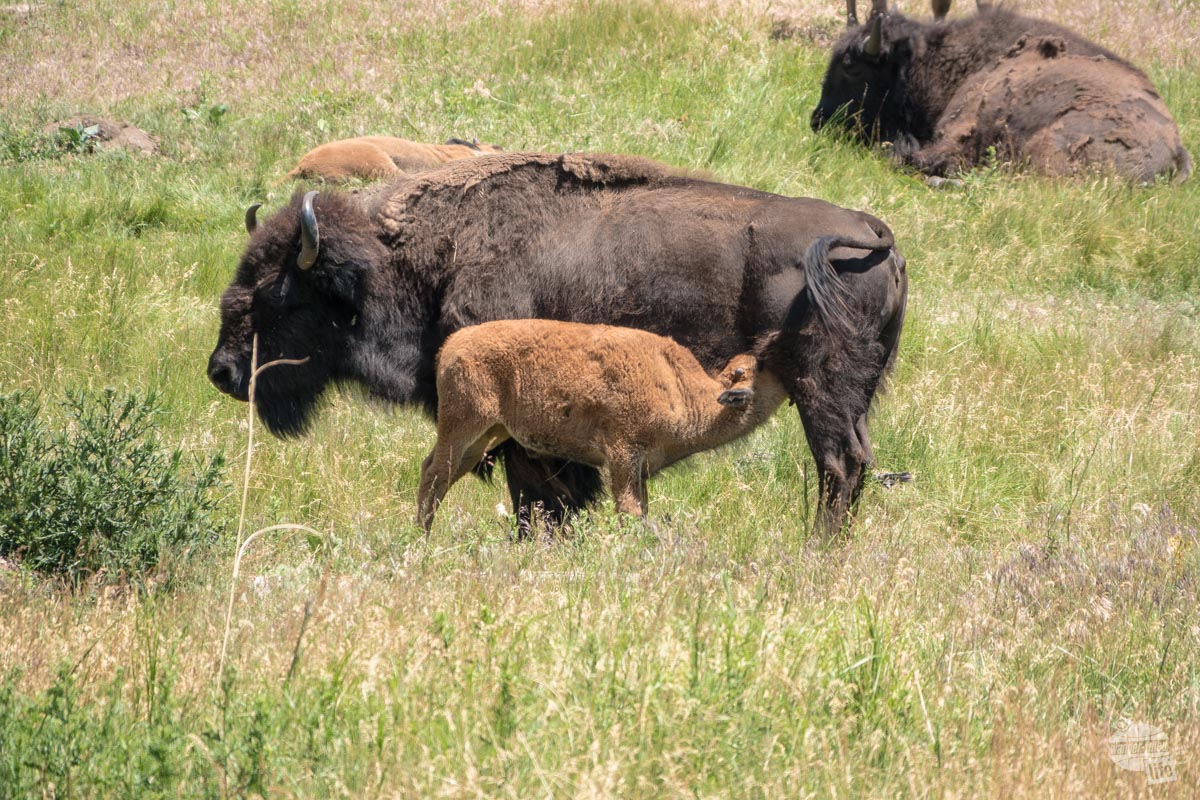
If/when you run into the herd, pull off to the side of the road so you aren’t blocking traffic. Most importantly, DO NOT APPROACH THE BISON!! In fact, it’s best if you just stay in your vehicle. However fat, slow or lazy these animals look, they can run up to 40 mph. I promise, that is faster than you can run. And, I don’t know about you, but I have no desire to find out just how much getting gored by a bison hurts.
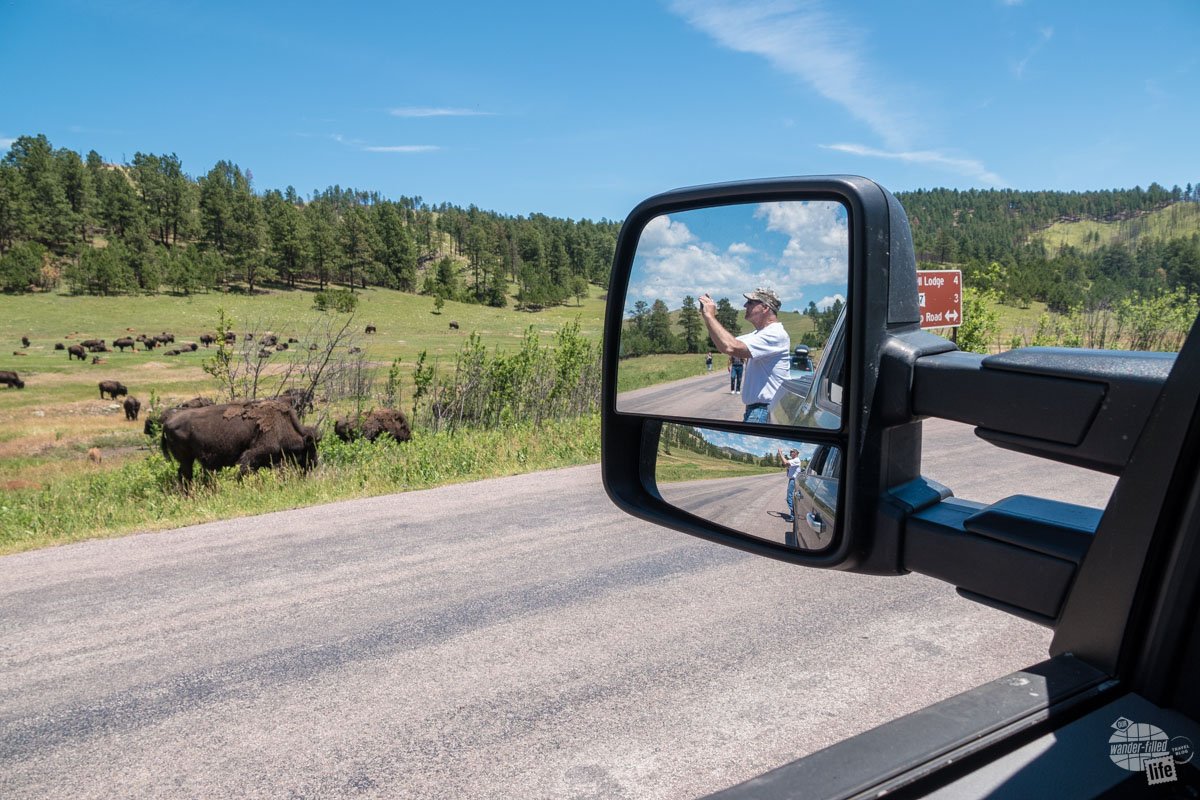
Admire them from afar, take as many pictures as you want. Just do not attempt to approach or touch the bison no matter how tempting it is!
Begging Burros
Burros, which are just small donkeys, have called Custer State Park home for nearly a century. They were first used as pack animals getting up Black Elk Peak, which is just outside the park and is the highest point in the US east of the Rocky Mountains. Once they were no longer needed as work animals, the burros were released into the wild and have lived at Custer State Park ever since.
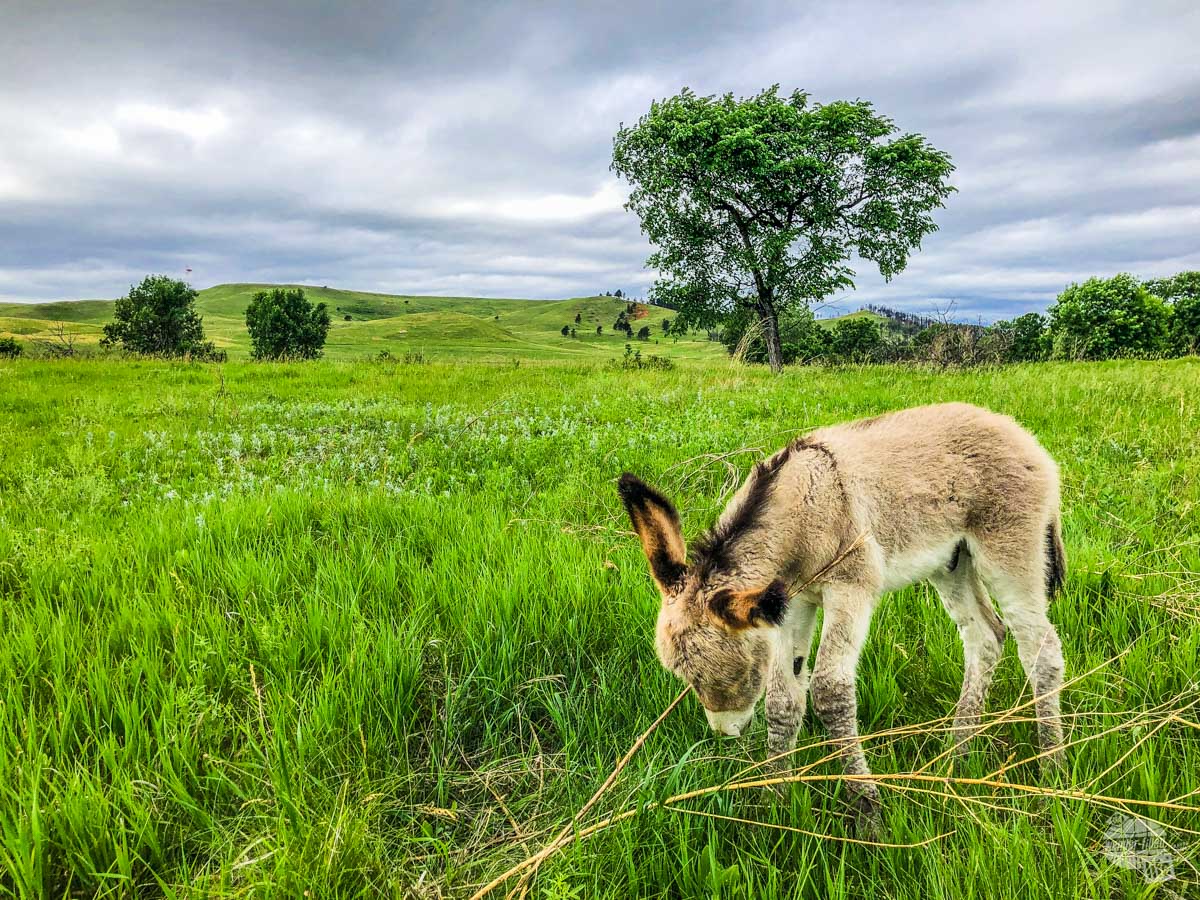
The burros that call Custer State Park home are extremely friendly and have grown accustomed to approaching visitors in search of food. Indeed, on our first visit to the park, back in 2012, a couple of burros stuck their heads in our car trying to find a snack! Thankfully, if they don’t find what they are looking for, they generally just move on without a fight.
They aren’t always that pushy, though. During our most recent visit, the burros stayed well off the roadway. Of course, that didn’t keep the people away – they just hiked out to wherever the burros were hanging out.
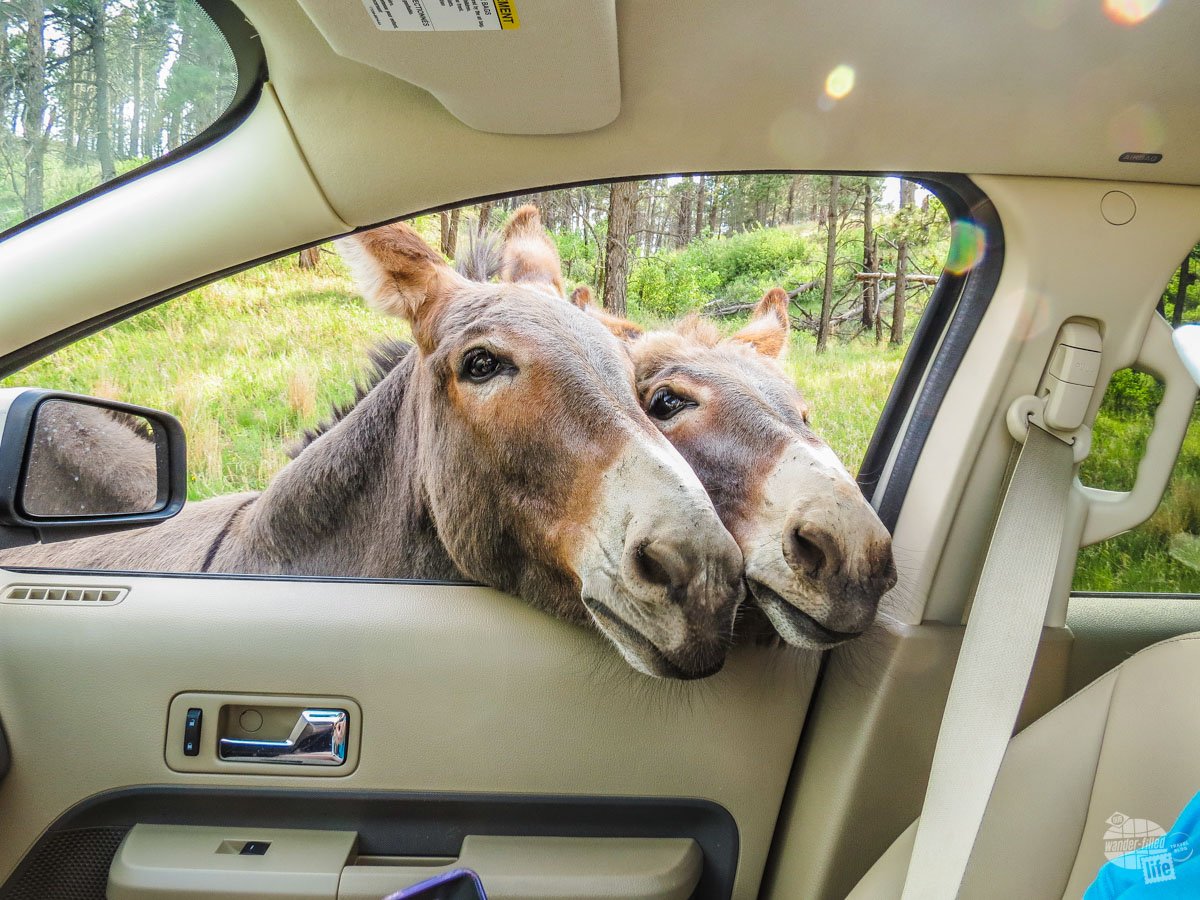
While the rangers ask visitors to not feed the burros, plenty of people come armed with bread, carrots or other snacks.
The burros are most often found near the south end of the Wildlife Loop.
Other Wildlife
There are plenty of other wildlife in the park, including pronghorn antelope, bighorn sheep and elk. We’ve seen pronghorns along the wildlife loop several times. Seeing them can be hit or miss, though.
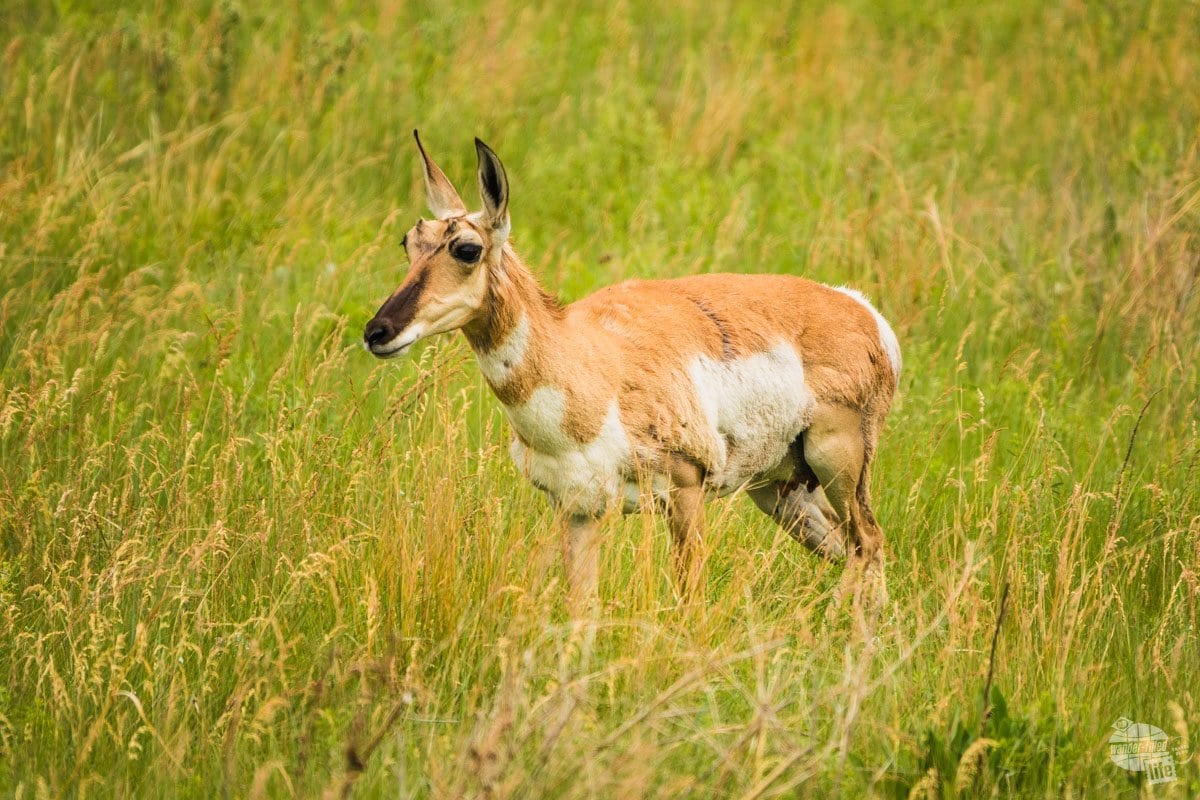
We most commonly see bighorn sheep along the main road, Hwy 16A. We spotted a small herd of females while hiking the Lover’s Leap Trail when we visited for the Buffalo Roundup in 2019. Bighorn sheep also like to lick the salty residue from antifreeze off the pavement, so you’ll sometimes see them hanging out right in the road.
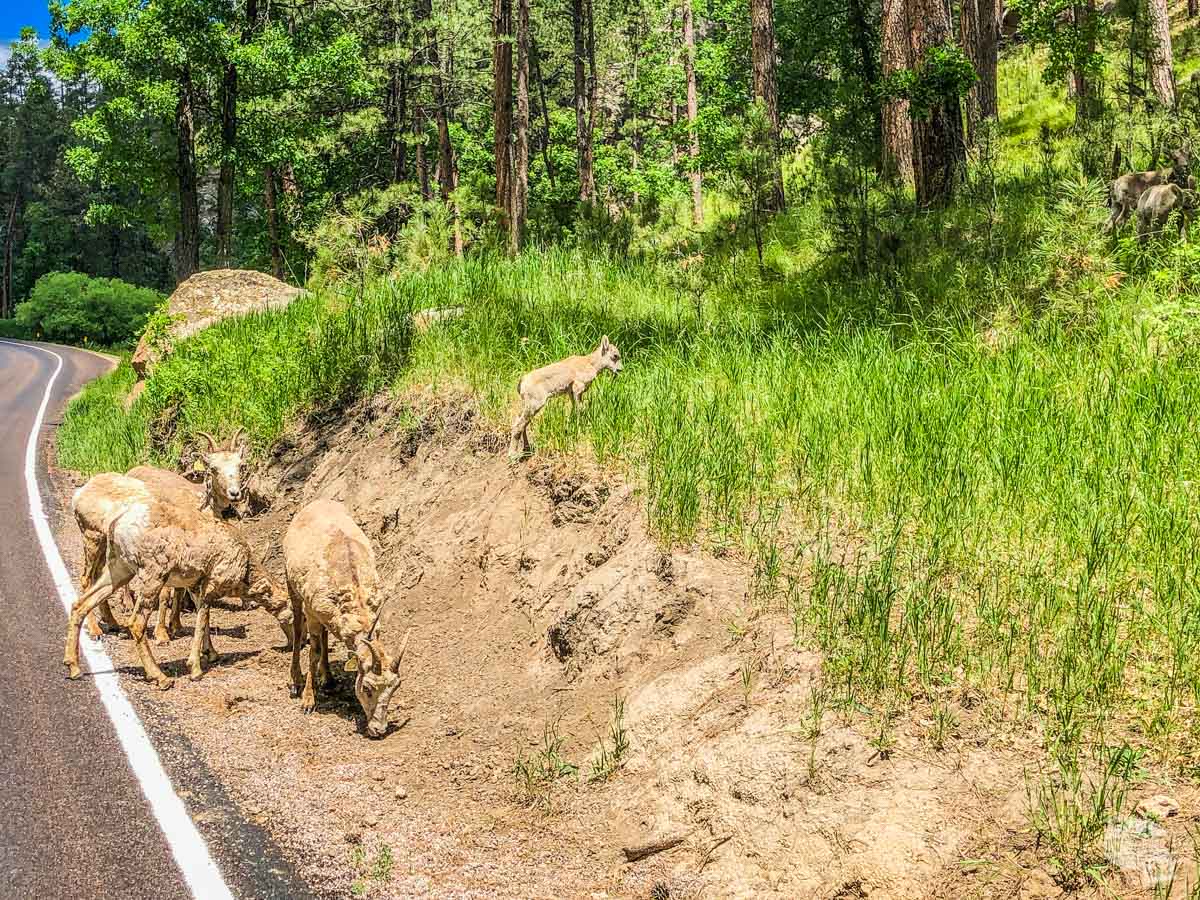
There are elk in the park but they are rarely seen. We actually had our first elk sighting on our very last night as we were headed out of the park on the west side. Apparently, the elk in Custer State Park aren’t nearly as extroverted as the elk in Yellowstone National Park! We had been told they are easiest to spot near dawn or dusk. Sure enough, it was well after sunset when we spotted the small herd that we saw (and way too dark for any pictures).
Unpaved Roads
Along the Wildlife Loop, there are a few unpaved roads cutting through the “middle” of the loop. Most of these are open to visitors. While unpaved, they are generally in good condition and most any vehicle should be able to easily handle driving on them. These roads are clearly marked on the park map.
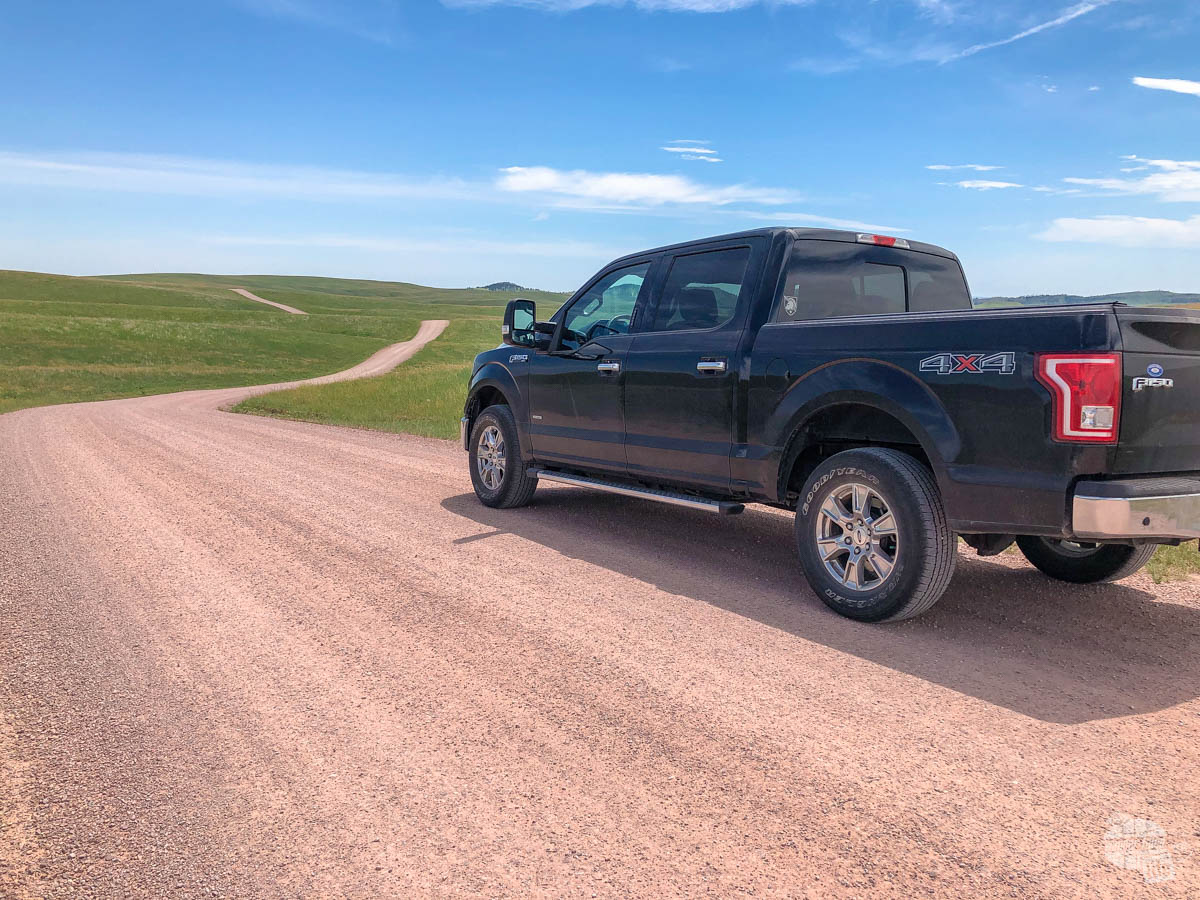
While these roads don’t offer much in terms of spectacular scenery, the bison sometimes hang out back here. And, sometimes it’s just fun to drive the dirt roads.
Stop at the Visitor Centers
Any visit to a park should include a stop at the Visitor Center as that is where you can pick up detailed information about what to see and do and any current update on park conditions. The main visitor center for Custer State Park is located along Hwy 16A near the east end of the Wildlife Loop.
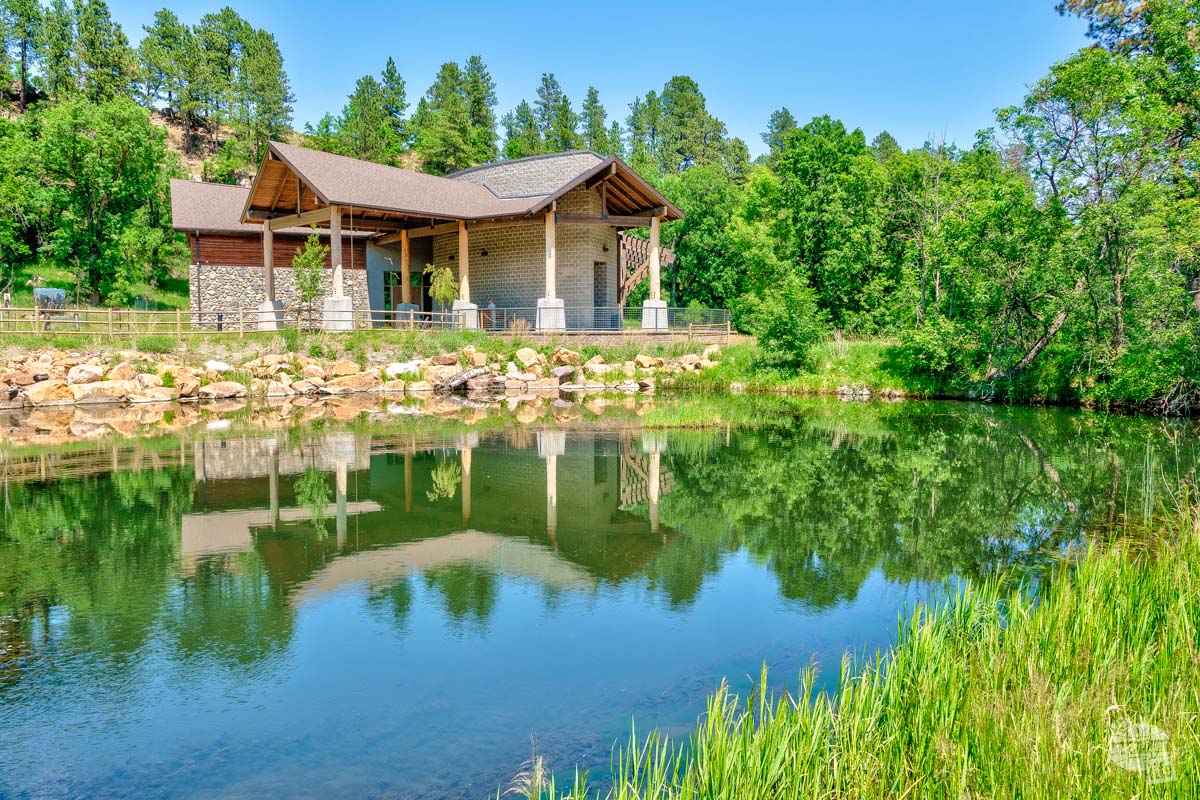
At the main visitor center, you can watch a short film to learn more about the park, get detailed advice from rangers on the best scenic views or where you are likely to spot wildlife and any other updates. If you’re interested in hiking in Custer State Park, be sure to ask for a trail guide and about trail conditions.
In addition to the main visitor center, the Peter Norbeck Education Center offers children and families the opportunity to learn and explore more about the park. Typically, the education center offers programs throughout the summer. Unfortunately, it was closed during the summer of 2020 due to COVID-19.
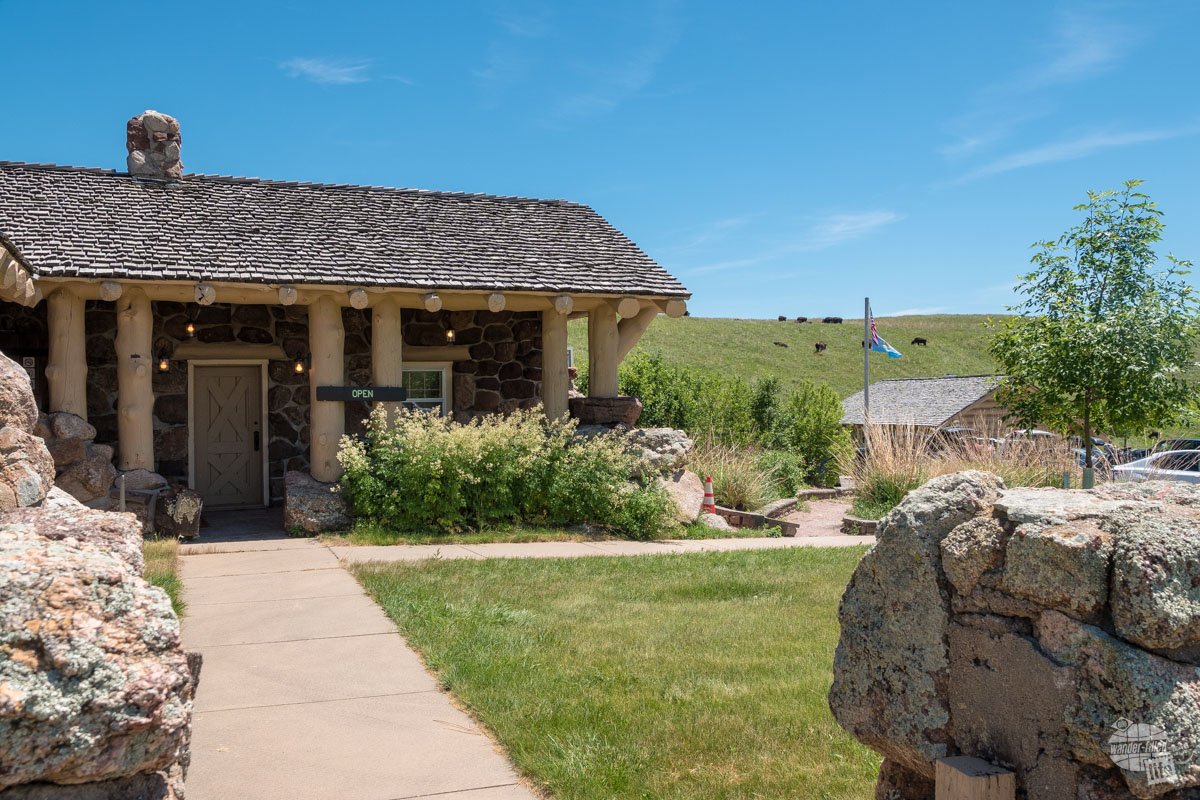
Along the Wildlife Loop, you’ll find the small Wildlife Station Visitor Center. The building was once the herdsman’s house, before being converted to a visitor center in 1987. Here, you can learn more about the animals and ecosystems in the park.
Drive Needles Highway
While pretty much all of the major roads in the Black Hills are considered scenic drives, the Needles Highway is one of the best drives in the area. Connecting the west side of the park with the Sylvan Lake area in the north, the Needles Highway is a 14-mile road through some of the best scenery the park has to offer.
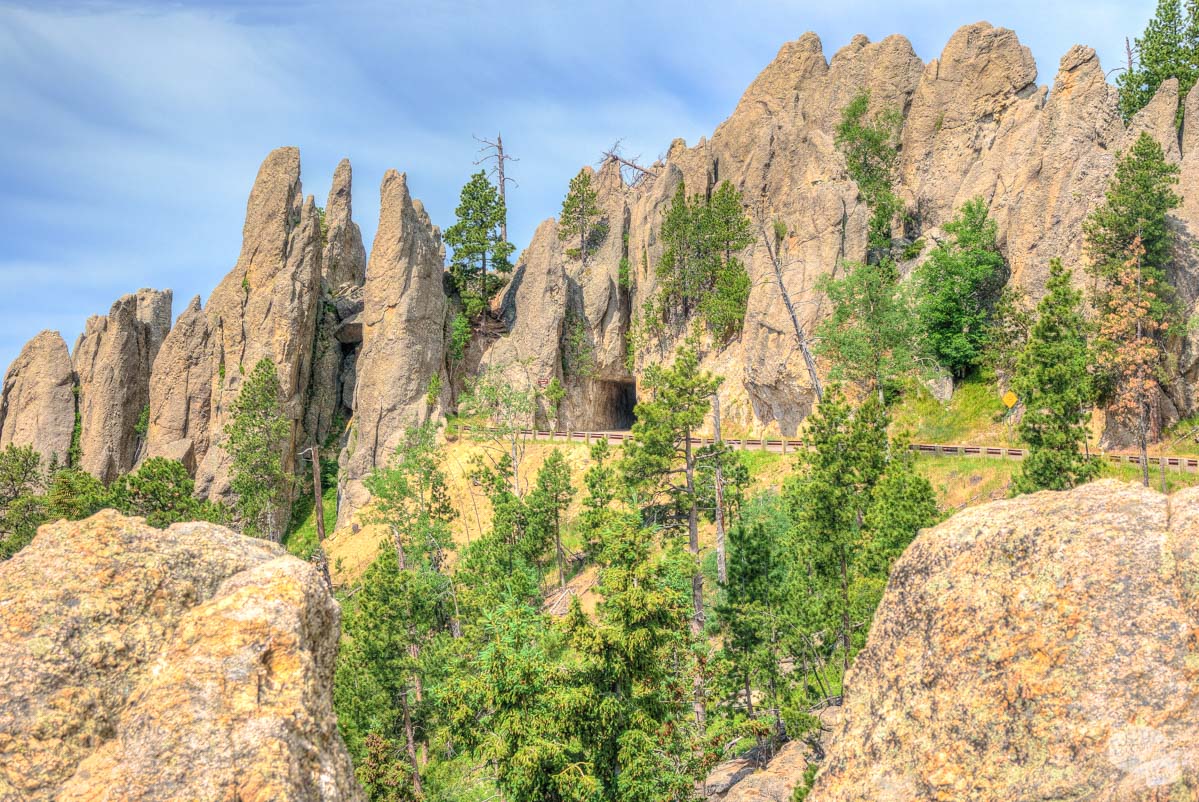
The road gets its name from the rugged needle-like granite formations. These granite formations, along with the ponderosa pine, birch and aspen trees create simply breathtaking views. Seriously, we’ve driven this road several times and marvel at its beauty every time. It simply doesn’t get old.
Along with the beautiful scenery, the road passes through two one-lane tunnels, so larger vehicles need to check their dimensions carefully. Both tunnels are 8’ 9” wide; the smaller tunnel is 9’ 8” high. We can get through with our F150, but its very tight if we don’t fold in our wide tow-mirrors. We’ve also driven the road in a rented camper van. Any RV bigger than a camper van likely will not fit through the tunnels.
Thinking about renting an RV? Check out our review of renting a camper van with Outdoorsy.
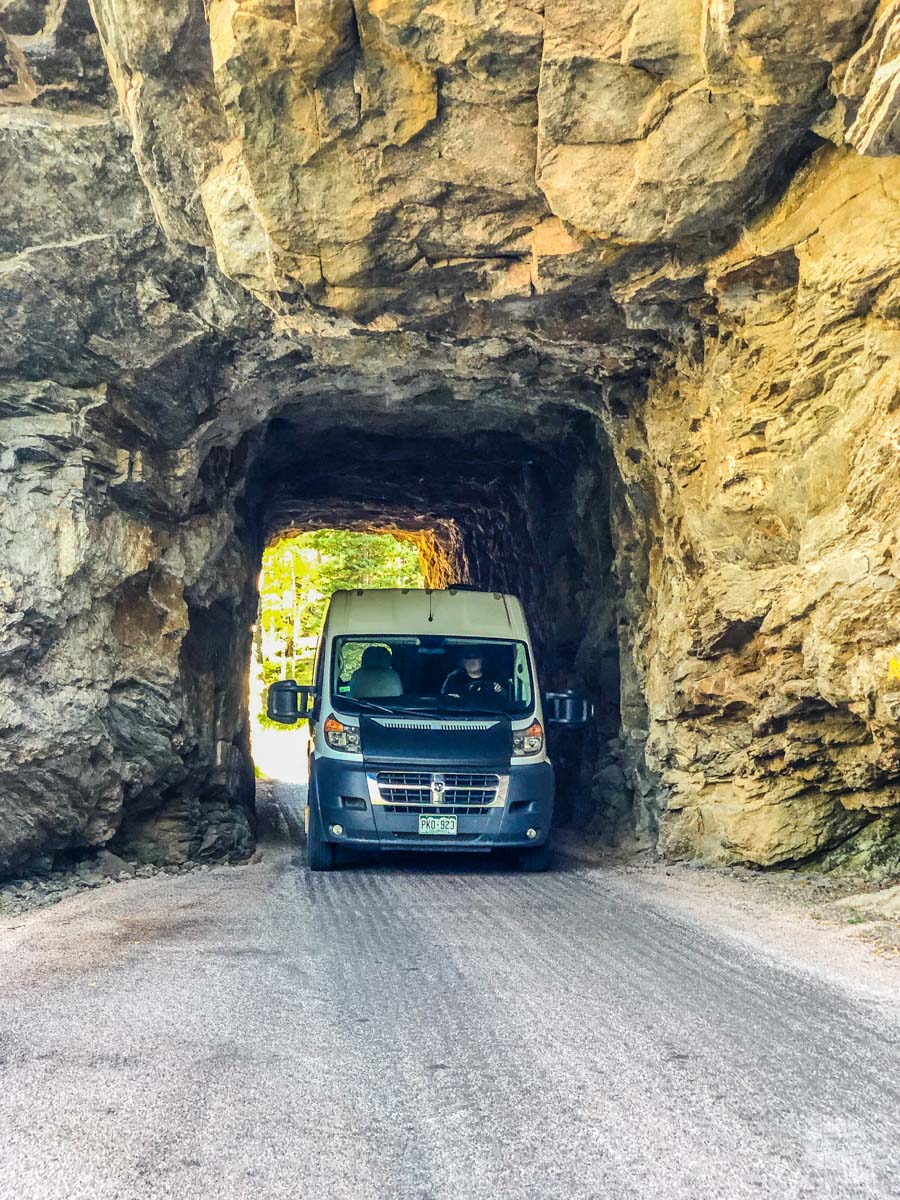
The road is quite twisty, so be prepared if you’re susceptible to car-sickness. There are plenty of pull-offs along the way; be prepared to stop frequently to admire the views and take pictures.
It usually takes us about an hour to drive Needles Highway. That does include a few stops. Anyone driving it for the first time may want to budget a little longer. We think the best way to drive the Needles Highway is north, towards Sylvan Lake, but it is a great drive either direction.
Enjoy Sylvan Lake
Speaking of Sylvan Lake… whether you get there from the Needles Highway or another, easier-to-drive route, it is certainly worth a visit. The backdrop of granite boulders make Sylvan Lake one of the most recognizable lakes in the park and in all of the Black Hills.
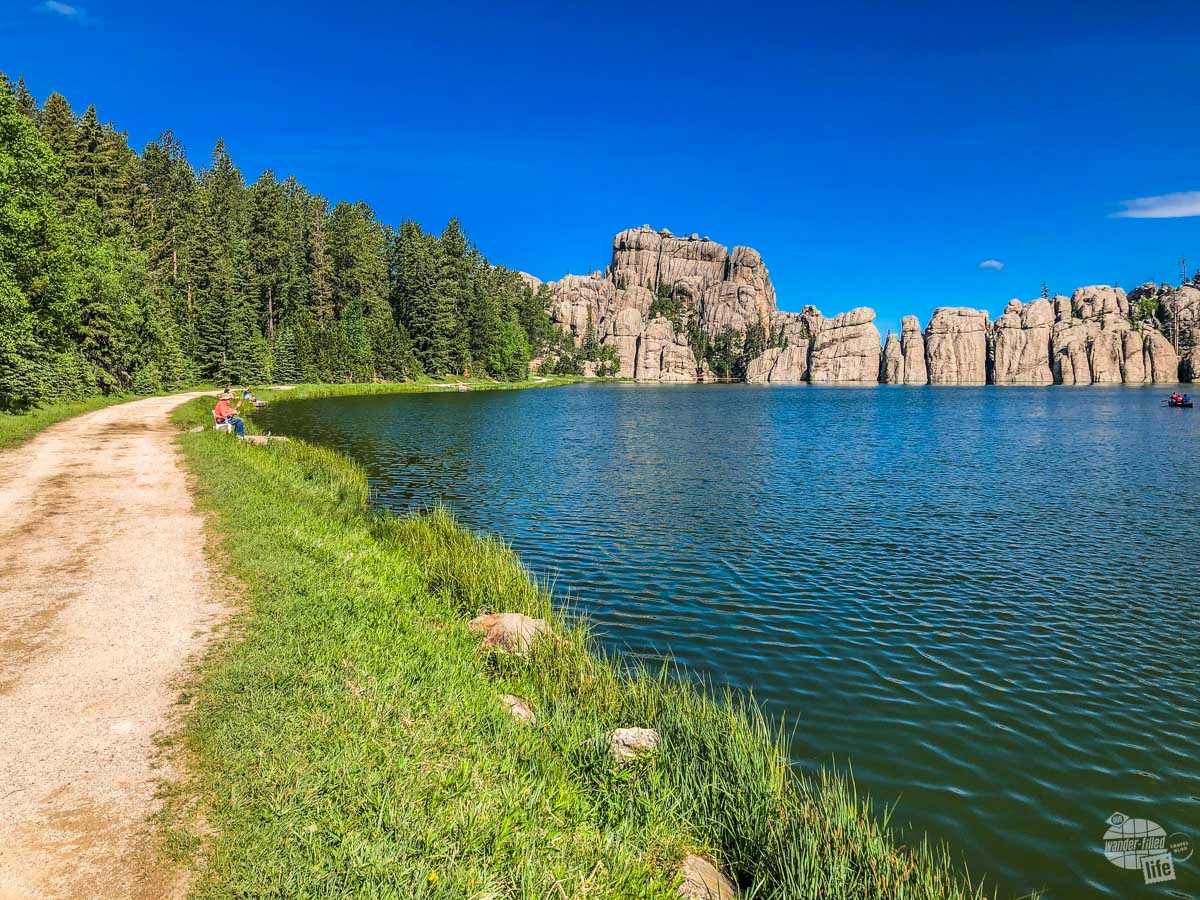
At Sylvan Lake, you’ll find several hiking trails, including a loop around the lake. There are also opportunities for canoeing, kayaking, paddleboarding, swimming, fishing or anything else you might want to do at a lake. This is a very popular area with limited parking, so arrive early in the day, especially on weekends.
Check Out Legion Lake and/or Stockade Lake
Located near the west entrance, Stockade Lake offers scenic views, a moderately strenuous hike, boating, swimming, fishing and even has a small playground. If you’re short on time, there are several parking areas where you can just get out and enjoy the views. There is also a short drive around the lake. I’ll be honest, this drive does not offer any better views than from the parking and beach areas, but it’s still a nice drive.
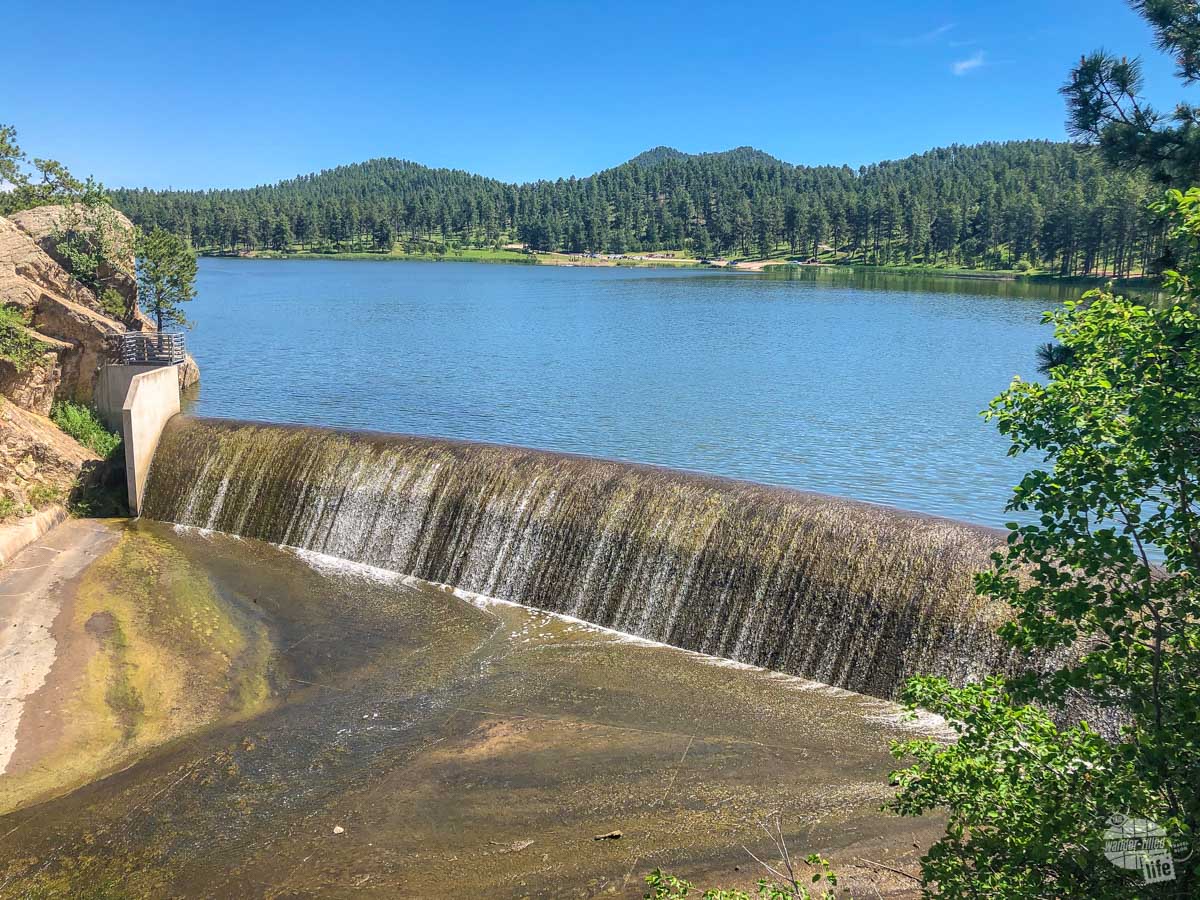
If you have a little more time, consider letting the kids play at the playground or swim. The Stockade Lake Trail is NOT an easy stroll around the lake, rather it is a 1.5 mile trail with about 450 feet of elevation gain.
At Legion Lake, just a little farther down Hwy 16A, you’ll find more opportunities for swimming, kayaking and dining. The the Legion Lake Lodge, we enjoyed sitting out on the deck with a beer and a couple of appetizers just taking in the lake views.
Admire the View from Mount Coolidge Fire Tower
Along Hwy 87 on the west side of the park, just north of the Wildlife Loop is a historic fire tower atop Mount Coolidge. At 6,023 feet, you have clear views over the central part of Custer State Park and the surrounding Black Hills, including Mount Rushmore and Crazy Horse. On a clear day, you can even see the Badlands, about 60 miles east.

Dating back to the 1930s, the fire tower was one of the last projects completed by the Civilian Conservation Corps. The fire tower is still used today. In fact, the day we visited a fire had just broken out on the north side of the park.
The road up to the fire tower is gravel, but reasonably well-maintained. It is very narrow and parking at the top is limited. Oversized vehicles and campers are not allowed. The road up Mount Coolidge is generally open 9:00 am – 5:00 pm during the summer. If the gate at the bottom is closed, try again another day.
Learn About the History of the Area
If you’re going to visit Custer State Park, you might as well learn a little bit about the history of the area.
Gordon Stockade Historic Site
Located right at the west entrance on Hwy 16A, the Gordon Stockade Historic Site tells the story of an illegal occupation by the Gordon Party following the discovery of gold in the Black Hills in 1874. Since the area belonged to the Plains Indians, white settlement was prohibited. The Gordon Party came anyway and built a log fortress to protect themselves from potential Lakota attacks.
The US Cavalry successfully removed the party from the area within a few months. Not long after that, though, the number of illegal gold-seekers coming into the area was too much for the army to control. Within two years, there were nearly 10,000 illegal settlers in the Black Hills.
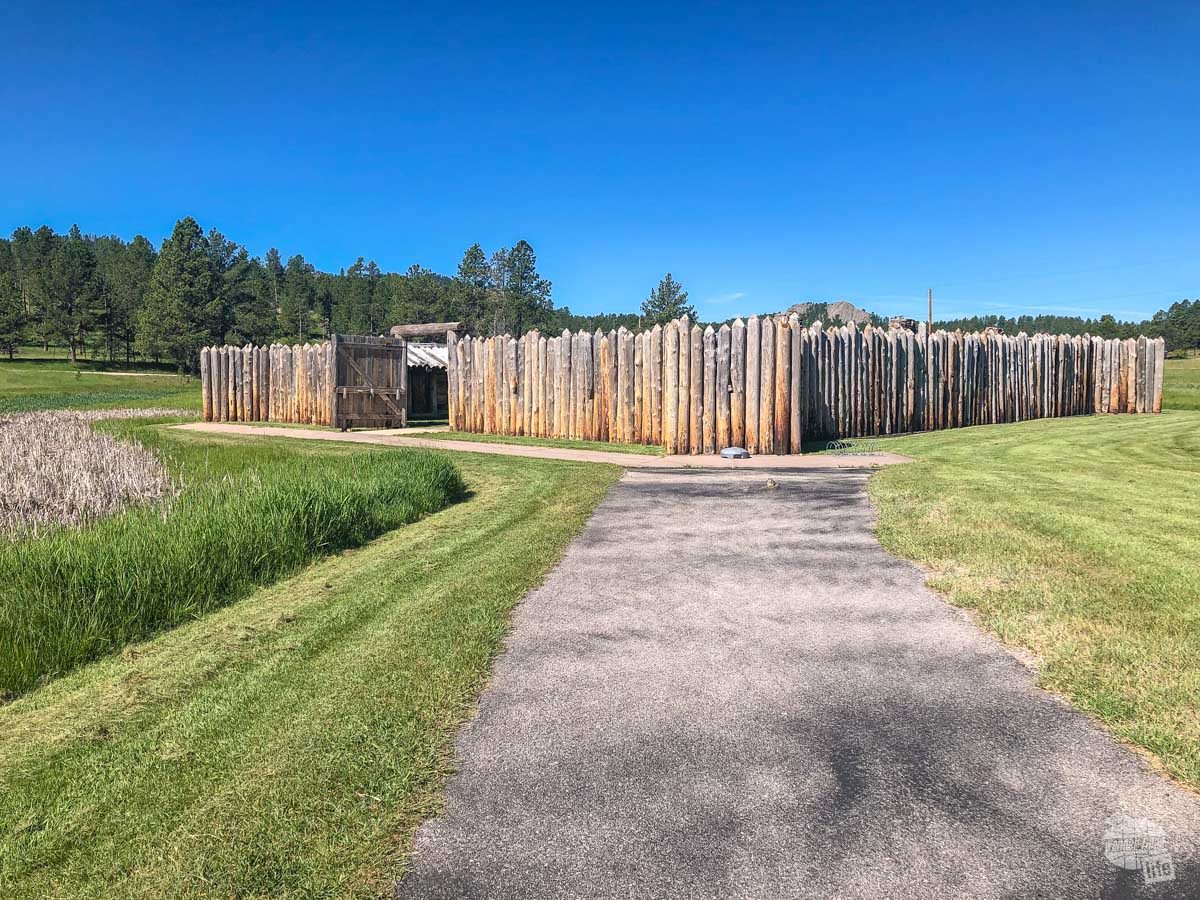
Yes, white settlers just came in and took land that officially belonged to the Native Americans by the Treaty of Fort Laramie (1851). To this day, there is still a lot of contention among the local tribes over the fact that whites stole this land.
At the historic site, you’ll find recreated cabins and a small exhibit explaining the history. You’ll only need about 10-15 minutes to visit this site on your way into (or out of) the park.
Badger Hole Historic Site
Located near Legion Lake, between the west entrance to the park and the Needles Highway turnoff, is the Badger Hole Historic Site. The cabin here was home to Charles “Badger” Clark, South Dakota’s first poet laureate. Here, Clark lived an independent life, writing poetry, reading and conversing with his fans.
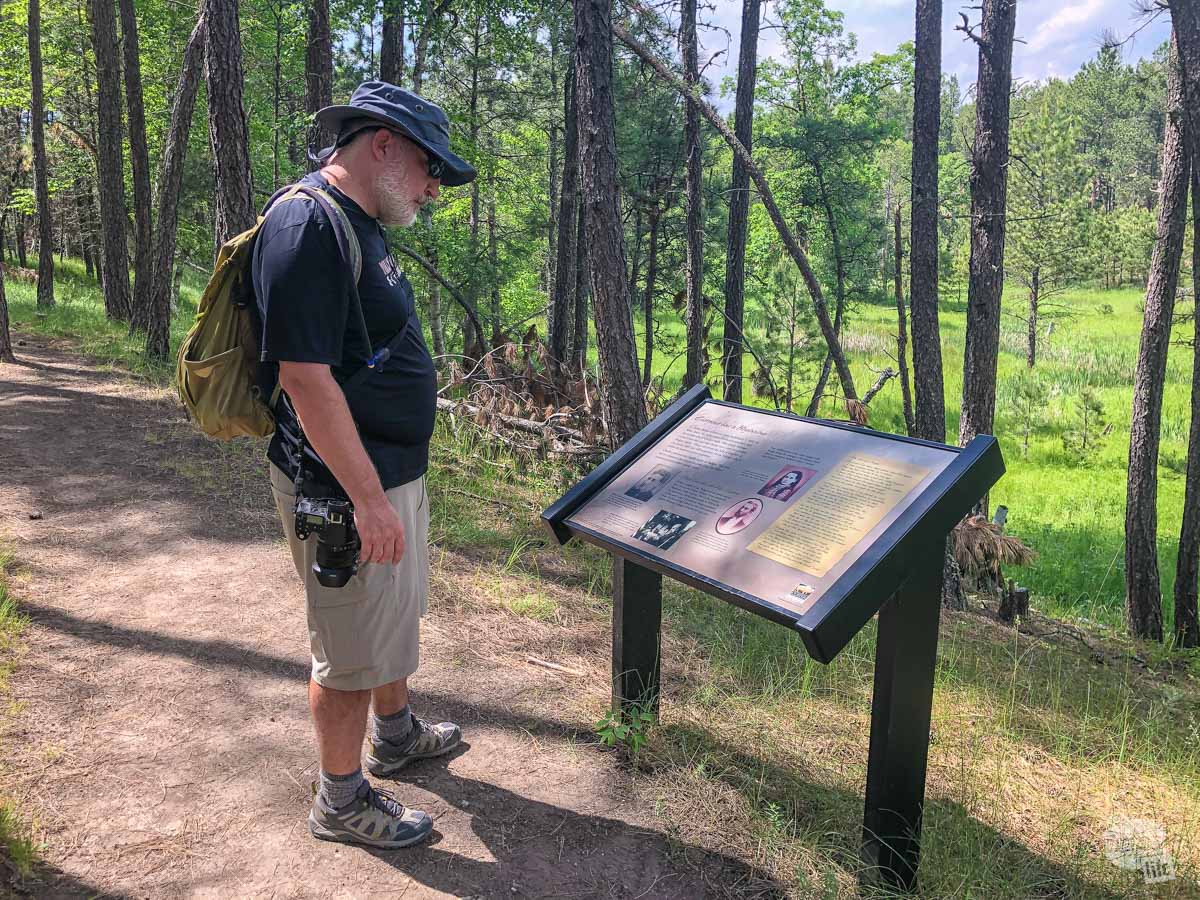
Clark’s cabin is generally open for visitors 9:00 am – 5:00 pm in the summer. Unfortunately, it was closed in 2020. There is also a short nature trail with several interpretive signs about Clark, his life and several of his poems. The hike is a 2/3-mile loop with less than 150 feet of elevation change.
We spent about 30 minutes hiking the trail and reading the signs. If the house had been open, I’m sure we would have spent another 10-15 minutes checking it out. You can also visit the house without walking the trail.
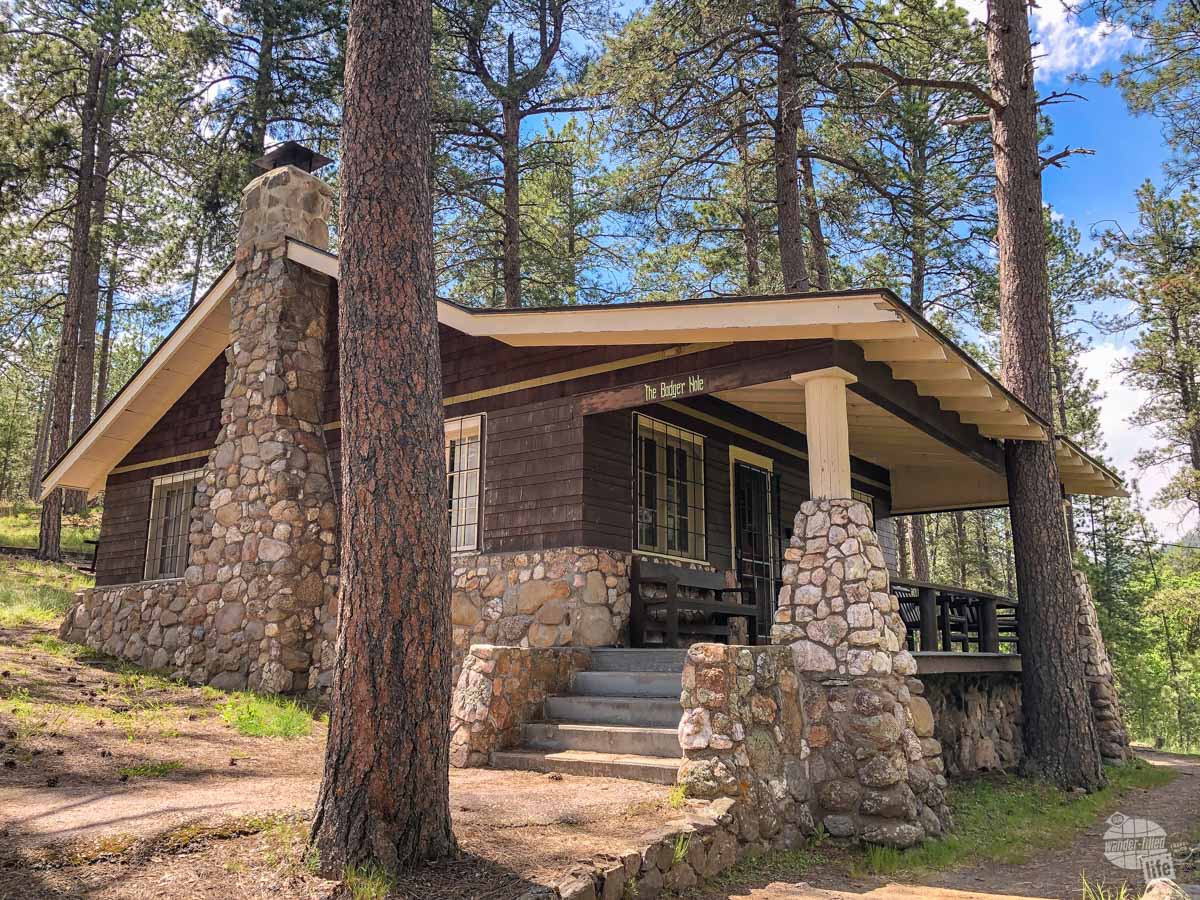
Pro Tip: The Centennial Trail (111-mile long trail through South Dakota) passes through this area. That trail is easier to see when you first park than the Badger Clark Trail – don’t accidentally take the wrong trail! Walk up the hill towards the house and you’ll see the correct trail.
Take a Hike
If you’ve got the time, one of our favorite things to do in Custer State Park is to get out on the trails. There are all kinds of opportunities for hiking in Custer State Park, for all interests and skill levels.
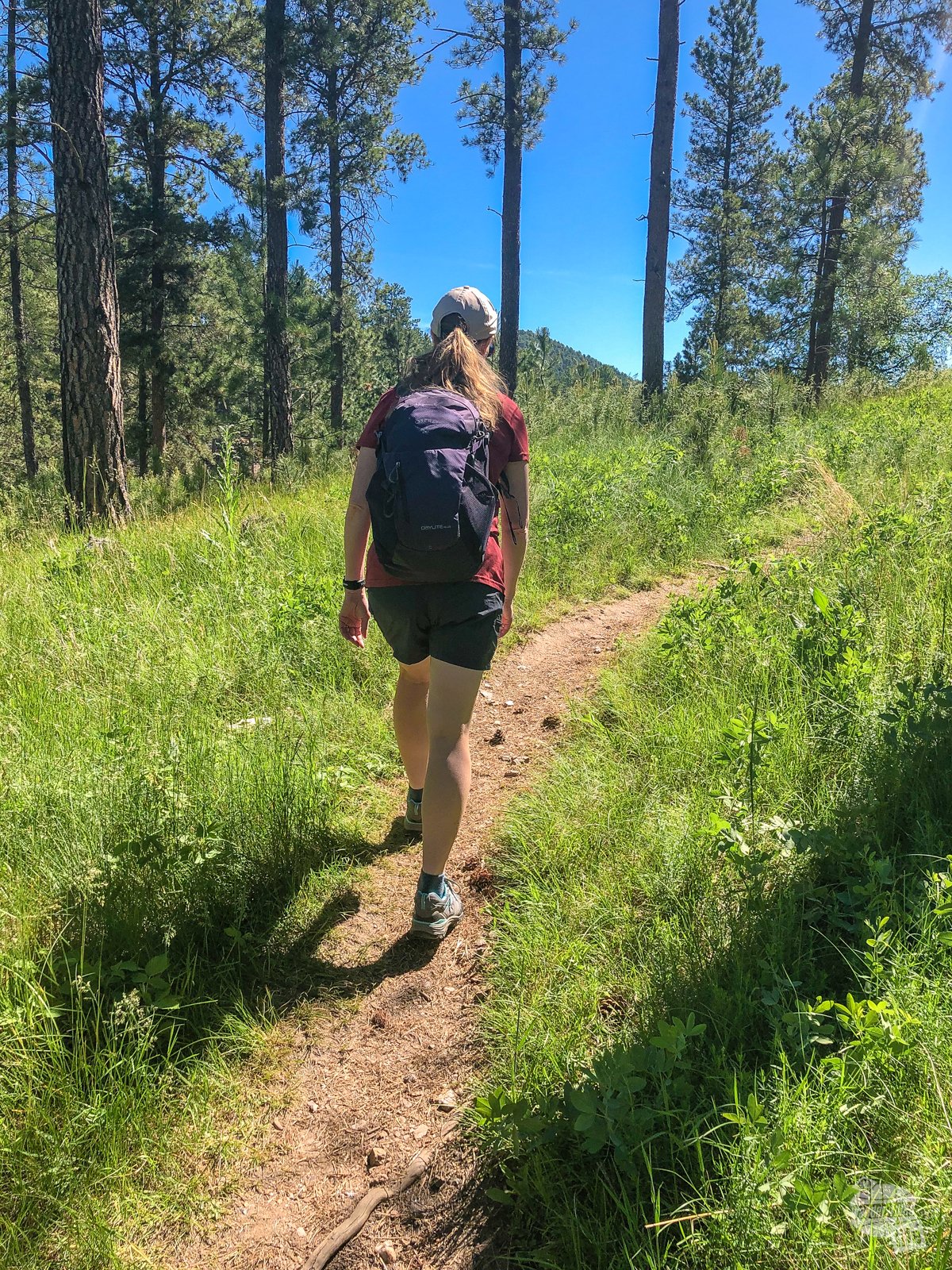
Easier/Shorter Hikes
For a relatively short and easy hike, I’d suggest the aforementioned Badger Clark Trail or Sylvan Lake Shore Trail. The Badger Clark Trail (.7-mile loop) winds through mixed pine and hardwood forest, offering plenty of shade on a hot afternoon. The Sylvan Lake Trail (1-mile loop) circles the ultra-scenic Sylvan Lake. It’s not a difficult hike but you do need to be able to handle a little uphill and uneven surfaces while scrambling over rocks, along the back side of the lake.
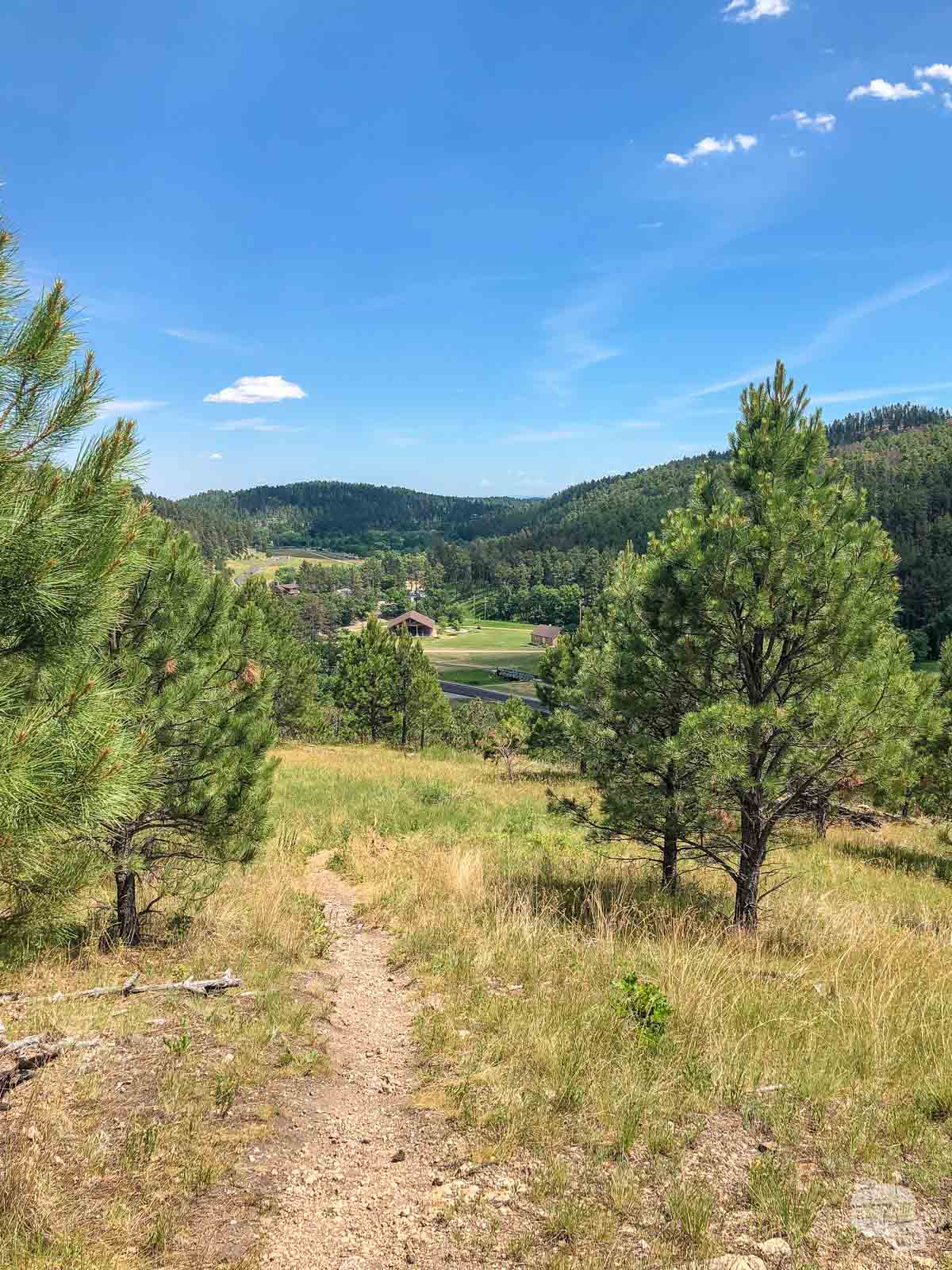
If you’re looking for short but fairly strenuous, check out the Cairn Trail, which is right behind the Peter Norbeck Outdoor Education Center. This loop trail offers a few views of the surrounding area and at less than a 1/2-mile it won’t take you long to complete.
Moderate Hikes
For moderate trails, we’ve hiked and enjoyed, the Prairie Trail (3-mile loop), Lovers Leap Trail (4-mile loop), Stockade Lake Trail (1.5-mile loop) and the Sunday Gulch Trail (4-mile loop). All of these offer moderate elevation gains and great views.
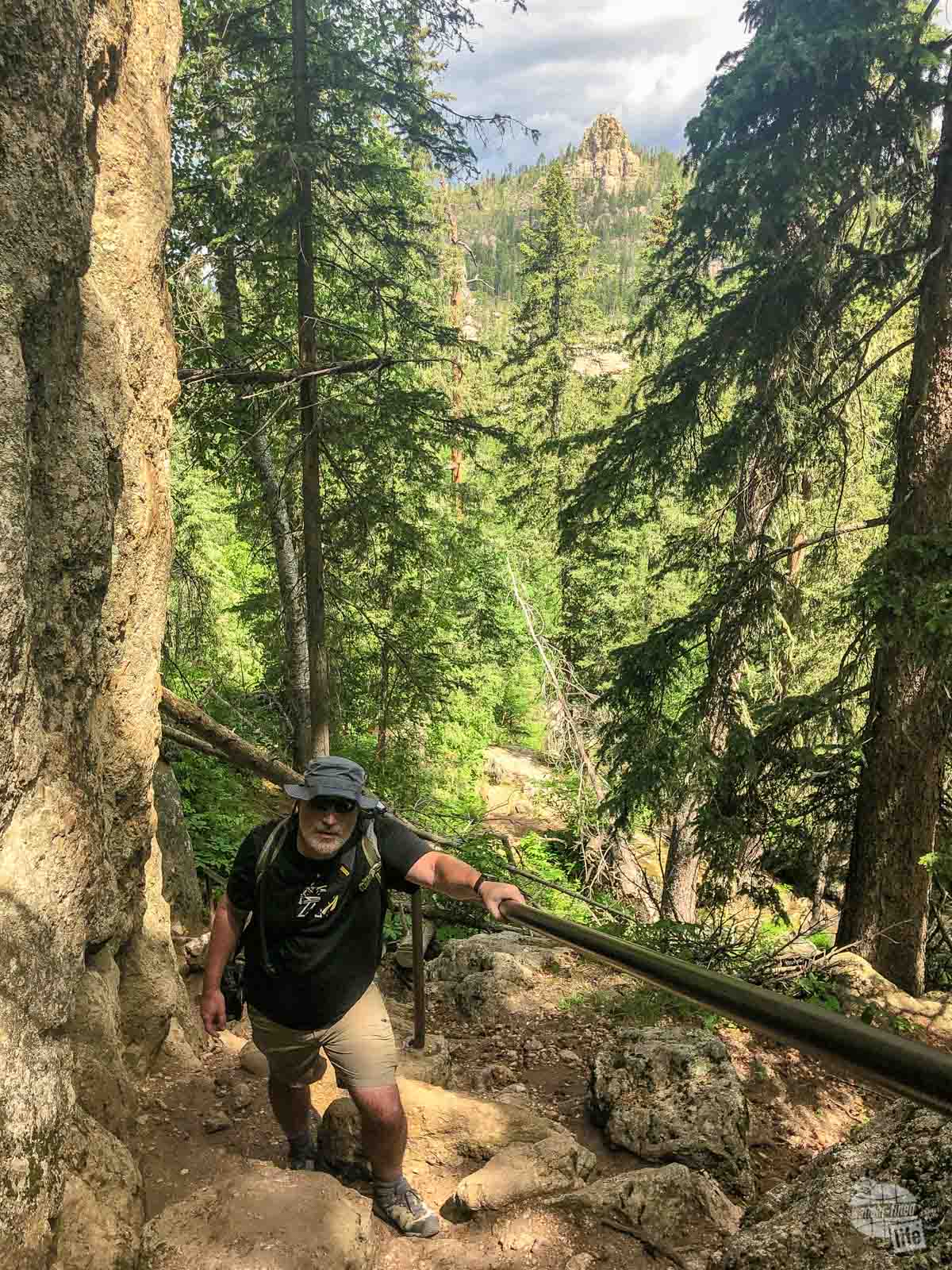
The Sunday Gulch Trail involves quite a bit of rock scrambling on one end but, if you can handle it, it’s a really cool hike. The others are a bit easier as long as you can handle the incline.
Strenuous Hikes
If you really want a challenge, consider the Black Elk Peak and/or Little Devils Tower Trails. You can do them individually or together, which is what we did. Black Elk Peak is 6.4 miles round trip with 1,500 feet of elevation gain. Little Devils Tower is about 3.6-miles with 750 feet of elevation gain.
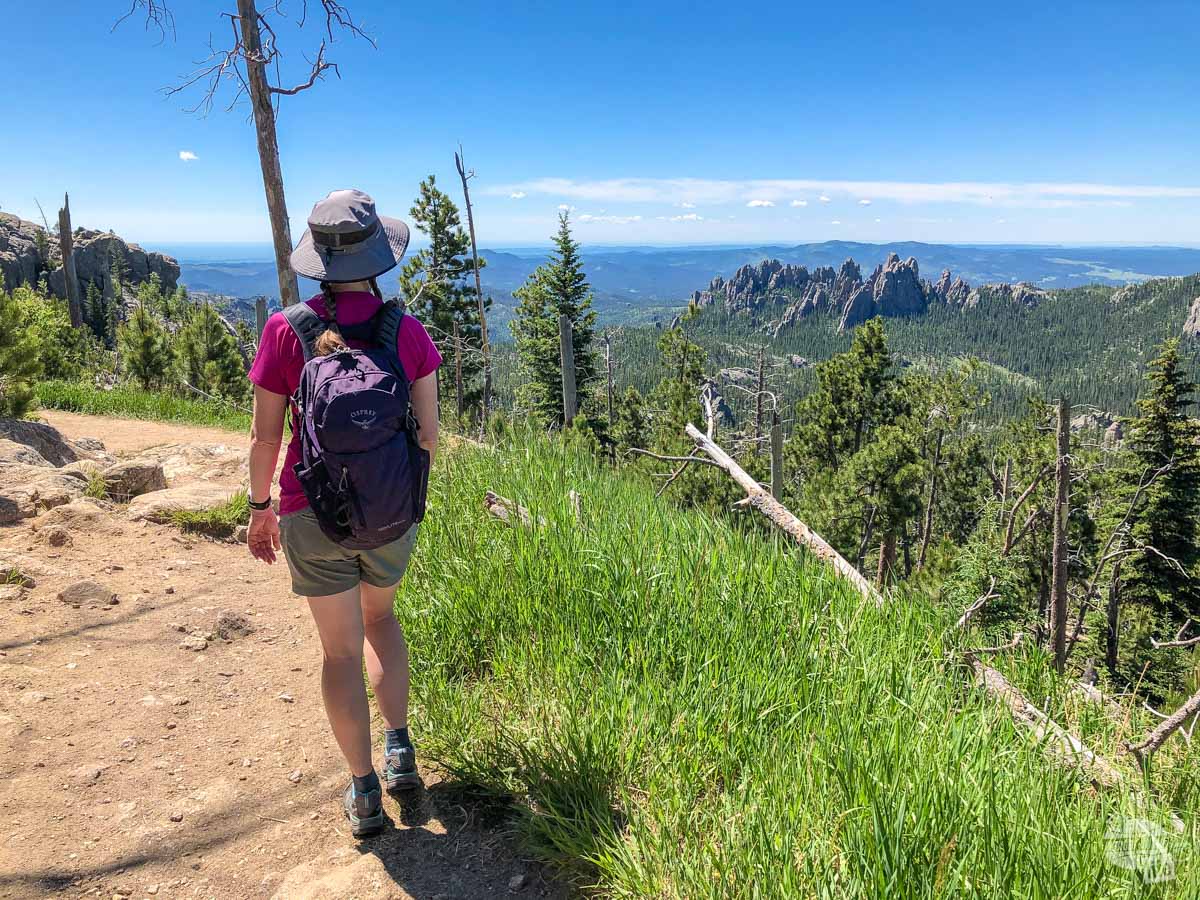
Combining them really isn’t too bad, though. As one big loop, it’s 7.7 miles and 1,700 feet of elevation gain. Yes, it’s a long hike and it’s tough, but you’ll get some great views.
Read more about hiking in Custer State Park.
Where to Stay When Visiting Custer State Park
Custer State Park offers quite a few options for staying inside the park, including several lodges and campgrounds. There are also many hotel and camping options in the surrounding cities and Black Hills National Forest.
Inside Custer State Park
Despite all the great lodging and camping options inside Custer State Park, we’ve actually never stayed inside the park. I’ve heard great things about the campgrounds, though, so staying inside the park is high on my list for our next visit! Inside Custer State Park, there are 5 lodges and 9 campgrounds. I’d dare say that is more than most national parks!
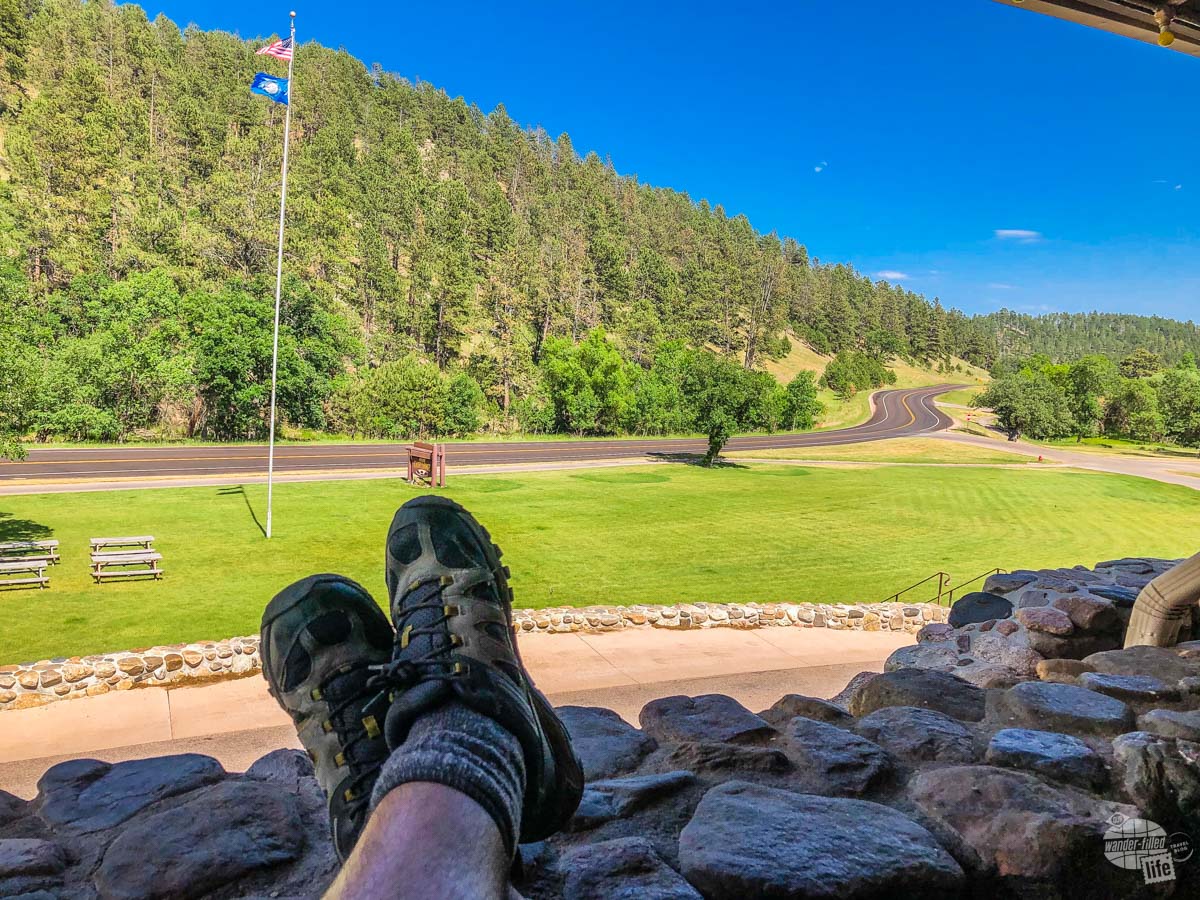
There are campgrounds that can accommodate both tenters and RVers. You’ll find toilets and showers at all the campgrounds, but some offer vault toilets only. For RVers, some campgrounds offer electricity but there are no water or sewer hookups. There are a couple of dump stations, though.
If you are focusing your time on visiting Custer State Park, I’d certainly consider staying in the park. If you are planning to visit other surrounding sites (and there are plenty of other great parks and attractions in the area), you may want to stay outside the park.
Outside Custer State Park
When camping, we’ve always stayed at the Big Pine Campground in the town of Custer. It’s about a 10-15 minute drive to the west entrance of the park. This campground offers well-shaded campsites with a variety of hookup options. The best things about the campground are the sites are well-spaced, so you’re not right on top of your neighbor, and the bathrooms are always clean!
Check out our review on Campground Reviews.
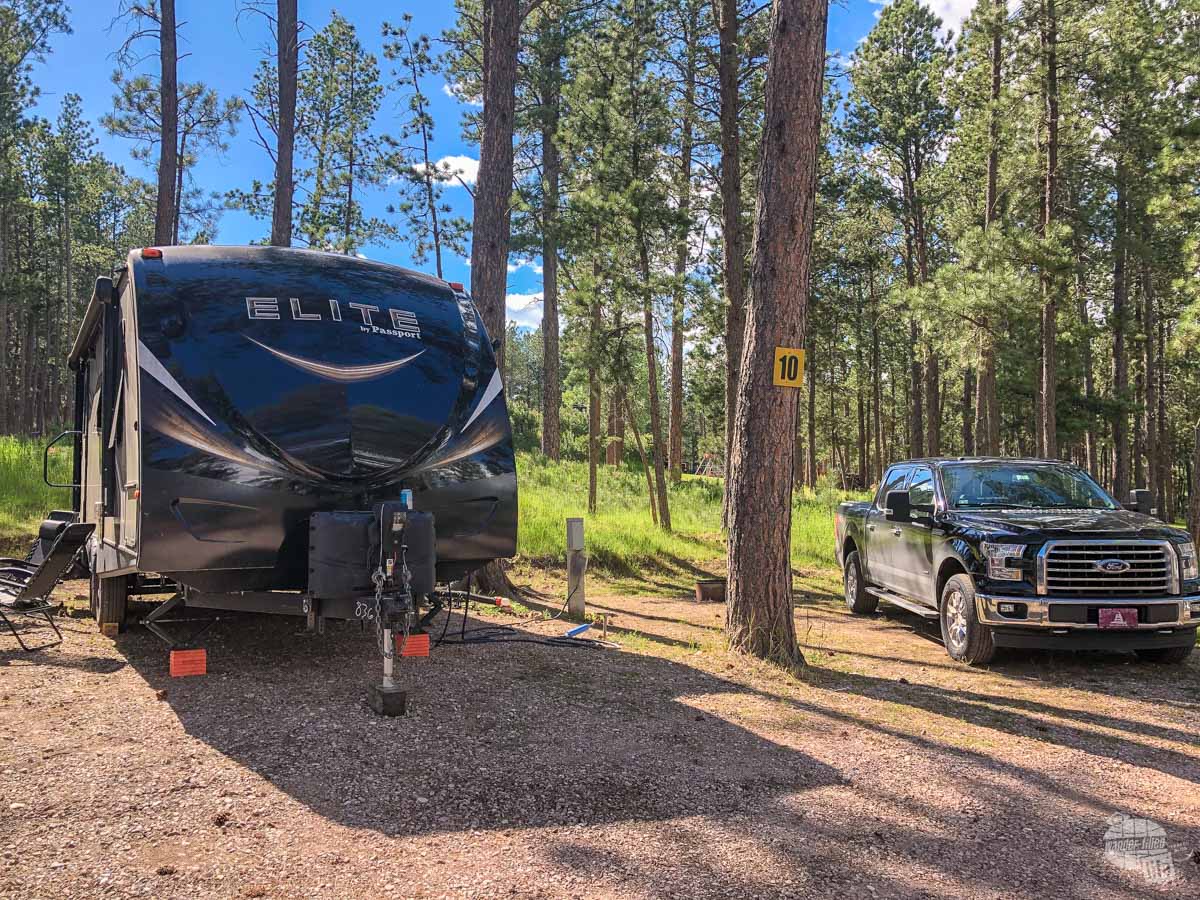
If you prefer a traditional hotel or want to be a little more centrally located, there are plenty of options in the nearby towns. We like Custer because it is a little less touristy and has a good number of restaurants and a decent grocery store. Hill City is a little more centrally-located, especially if you plan to travel north at all.
Keystone, where Mount Rushmore is located, has a couple of good museums and adventure parks, which would probably be good for families with young children. On the northern end of the Black Hills, Spearfish is a good size town with lots of options. Deadwood is fairly touristy but has a lot of fun history.
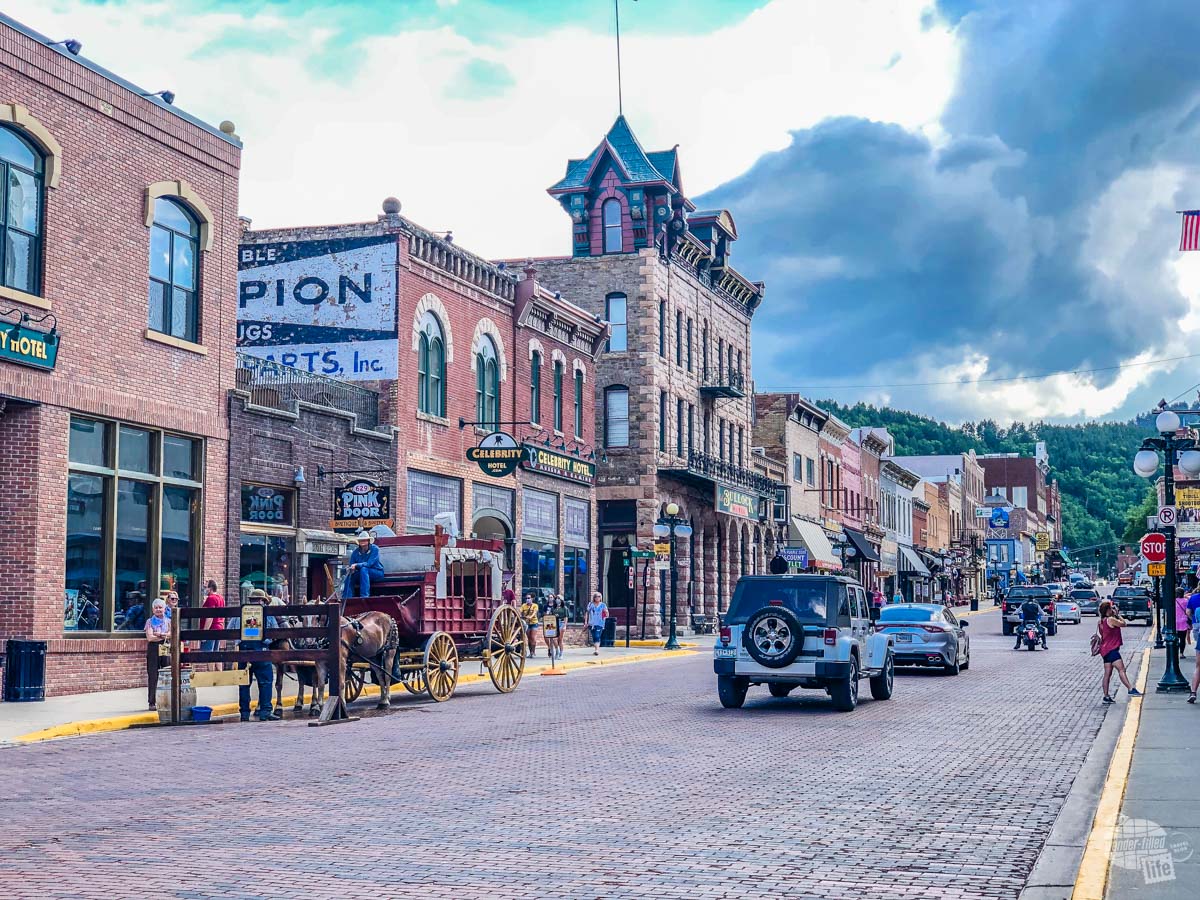
These towns offer a variety of hotels, both independent and major chains. Which hotels are where is a bit hit or miss, though. For instance, Deadwood has a couple of Hilton properties but Custer and Hill City do not. If you are loyal to a particular brand just check the web site for your options.
Rapid City is the biggest town in the area. That is where you will find the most options in terms of hotels and restaurants. We stayed at the Hilton Garden Inn when we visited in the winter of 2018-19. Our stay was great, even after getting snowed in by a blizzard.
Read TripAdvisor reviews and book a hotel.
Dining in Custer State Park
Whether you are staying inside Custer State Park or not, you should consider dining inside the park as there are some great options. I’ll admit, this most recent visit, our fourth time at Custer State Park, was our first time eating in the park. Honestly, I don’t know what took us so long (other than a couple of visits were fairly short ones). The dining options are great and we really enjoyed all the food and drinks!
The park offers four options for dining. During our Summer 2020 visit, we enjoyed lunch at Blue Bell Lodge, beer and appetizers at Legion Lake Lodge and dinner at the State Game Lodge. The Sylvan Lake Lodge was the only dining room we didn’t make it to. We gotta have something new for our next visit, though, right?
Legion Lake Lodge
Legion Lake Lodge dining room sits right next to Legion Lake, with both indoor and outdoor seating. For us, a cold beer and a couple of appetizers were the perfect way to unwind after a day of hiking and exploring. This is the most casual of the dining options.
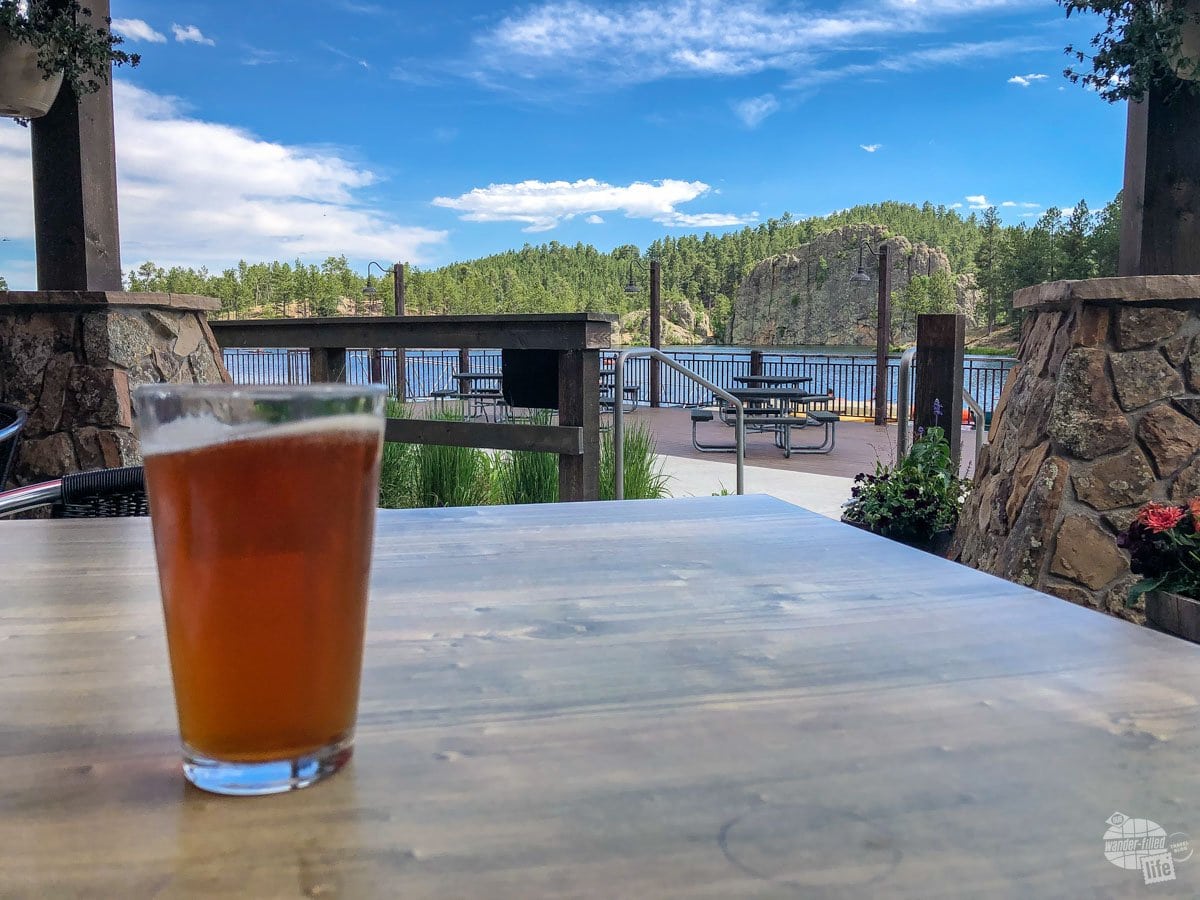
Blue Bell Lodge
The Blue Bell Lodge offers a Western theme in both its decor and menu. The menu was a bit limited during our visit but still had some great options. Grant really enjoyed the Bison Chili and I had the Bison Stew. Both were the perfect lunch for a cold, rainy day. And the leftovers were just as delicious. Moist cornbread with just the right touch of sweetness only added to the enjoyment of our meal.
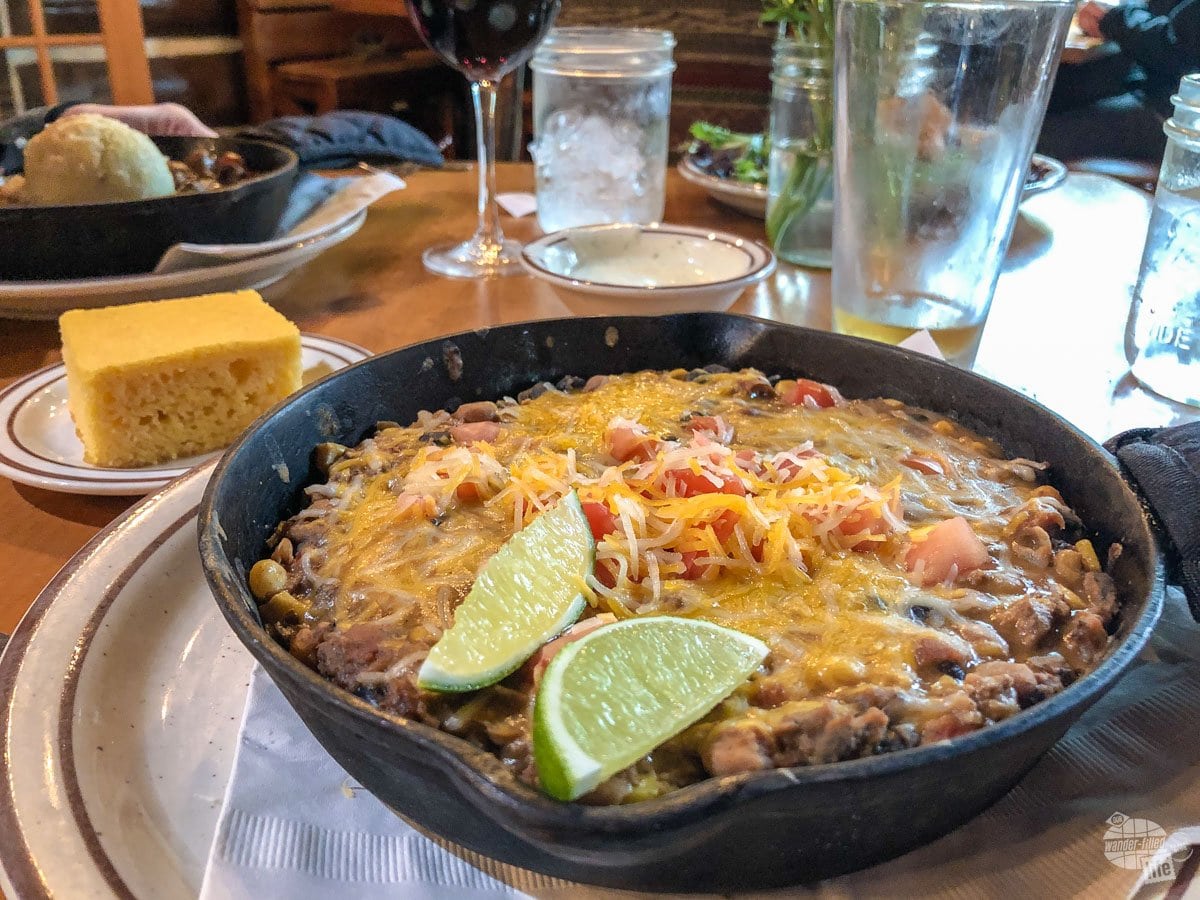
State Game Lodge
You’ll find the most upscale of the dining options at the State Game Lodge. Along with interesting and unique dishes, they have a nice selection of beer and wine.
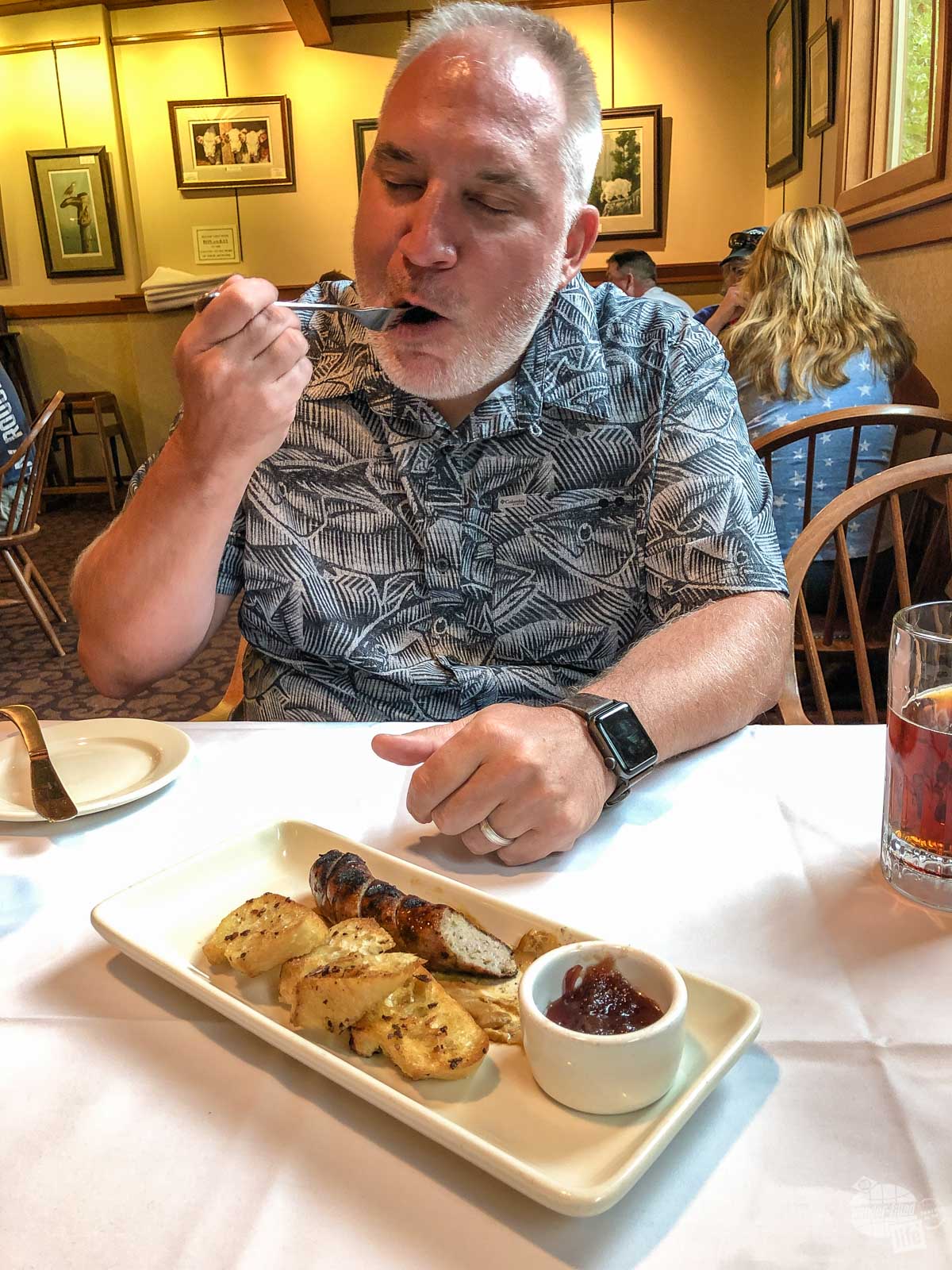
We enjoyed a dinner that started off with Rabbit & Rattlesnake sausage. It wasn’t nearly as gamey as I thought it might be and offered just a slightly different taste from a traditional sausage. For entrees, Grant had the Elk Osso Bucco and I chose the Bison Sirloin. Both were well-prepared and absolutely delicious. We finished off our meal with a slice of homemade Key Lime Pie, which was surprisingly tasty.
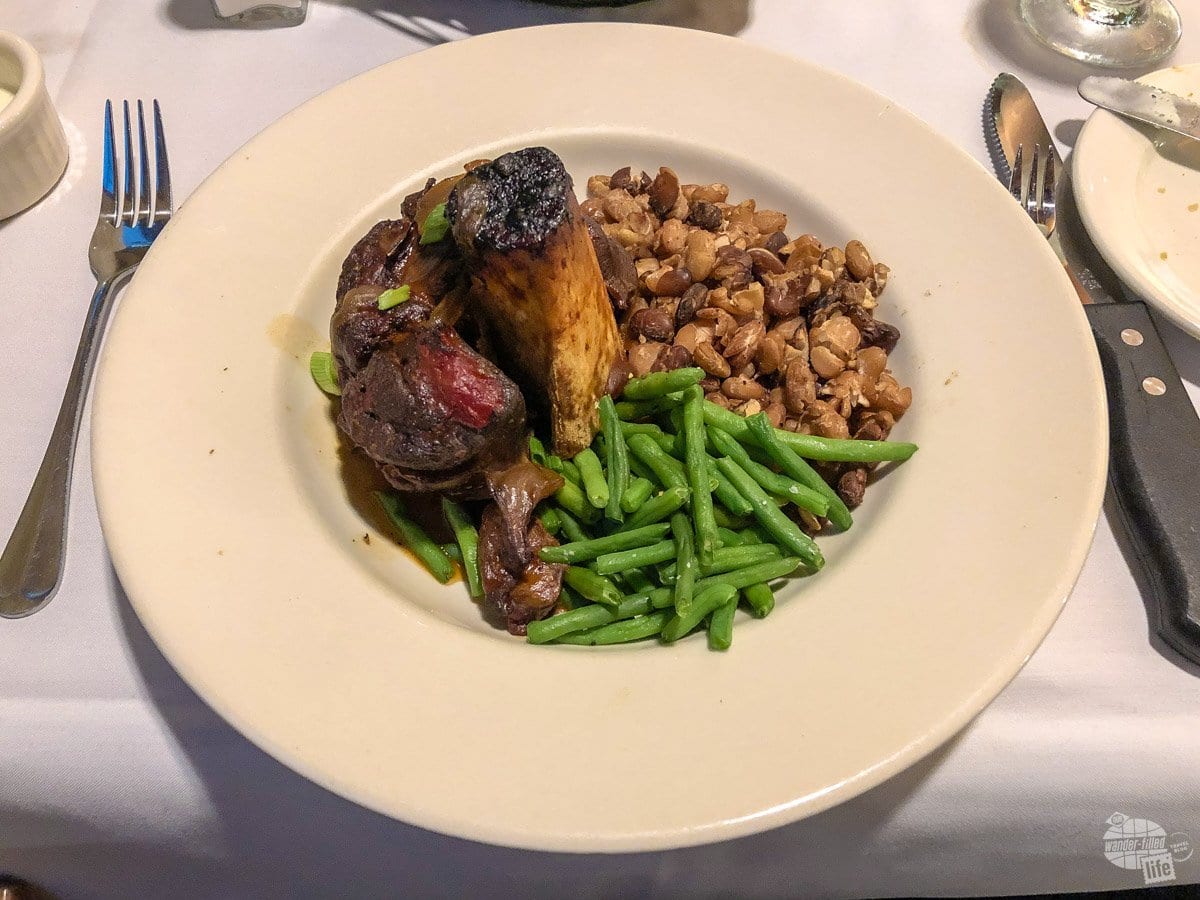
While we enjoyed the food at all the lodges we dined at, this was certainly the best meal we had at Custer State Park.
Annual Buffalo Roundup
If you are looking for something truly unique to do in Custer State Park, plan on visiting during the annual Buffalo Roundup. The park started the roundup in the 1960s as a way to get the bison herd healthy. This also allows them to manage the size of the herd, ensuring that it doesn’t get any bigger than what the land can support.
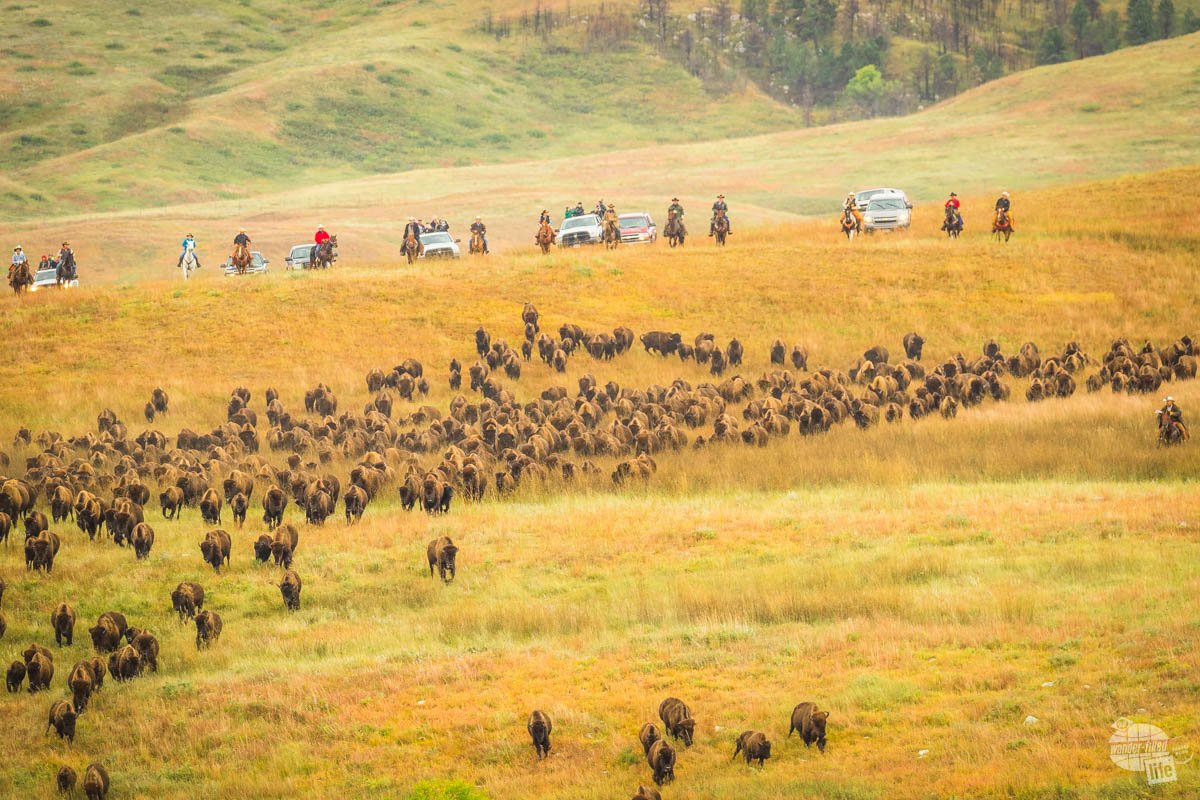
The roundup is held during the last weekend of September each year and is open to the public. Cowboys and cowgirls drive the herd on horseback, over the hills and into the corrals. We attended the Buffalo Roundup in 2019 and it was truly one of the most unique and awe-inspiring events we’ve attended.
There is just no way to explain the feeling of watching more than 1,000 bison galloping over the hills towards you. Once in the corrals, veterinarians check each bison individually for disease and pregnancy. Any young bison that have not yet been branded will be branded. You can watch this part as well, which is just as interesting as watching the herd run.
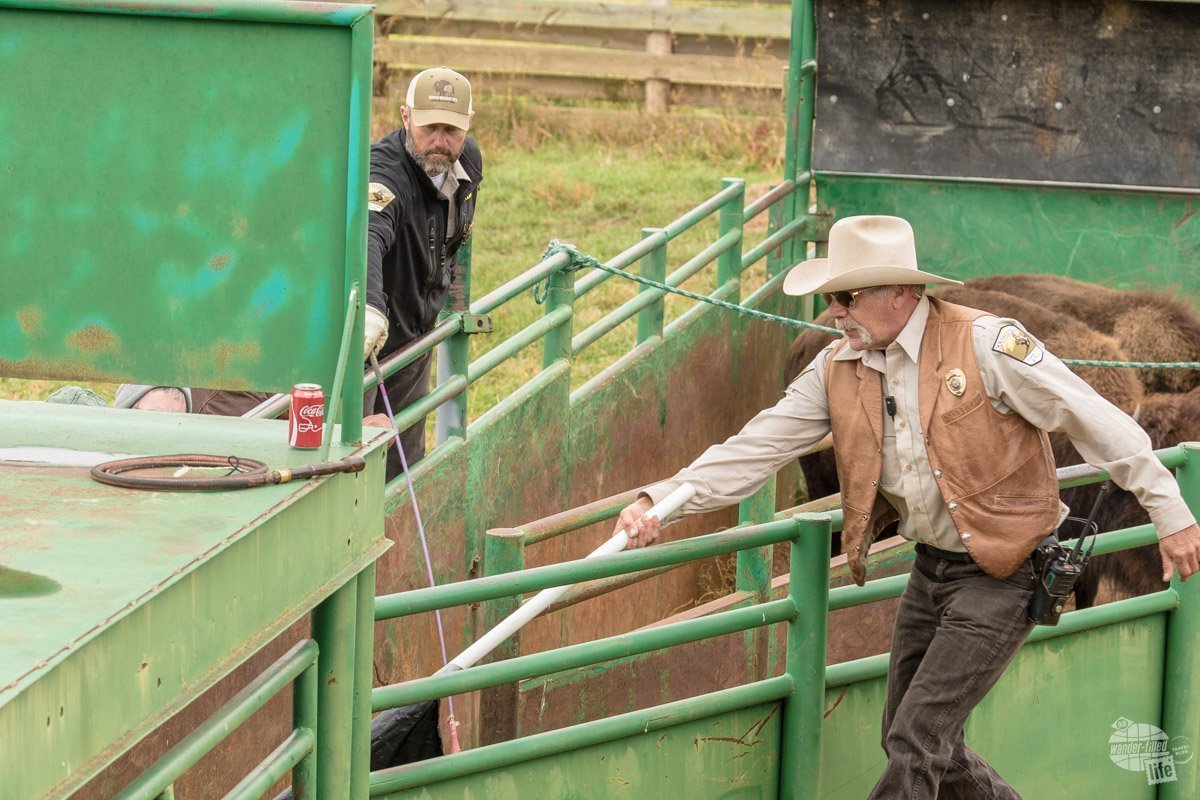
If you have the opportunity to visit during this time, I highly encourage you to do so. The one downside of visiting in late September and even through October is that once the bison are in the corral, it takes a while for the vets to check them all and decide which ones will stay in the herd and which ones will be sold at auction. If you are visiting in the weeks just after the Buffalo Roundup, the bison will NOT be roaming free. You can visit them in the corrals, though.
You can read more our our experience at the Custer State Park Buffalo Roundup here.
Other Things to Do Near Custer State Park
As you can see, there are MANY great things to do in Custer State Park. There are even more great parks and attractions in the surrounding Black Hills National Forest. You’ll find no less than six national parks within about a two-hour drive. There are seemingly endless opportunities for hiking and scenic drives. Additionally, each of the surrounding towns offer museums and attractions highlighting the history of the area.
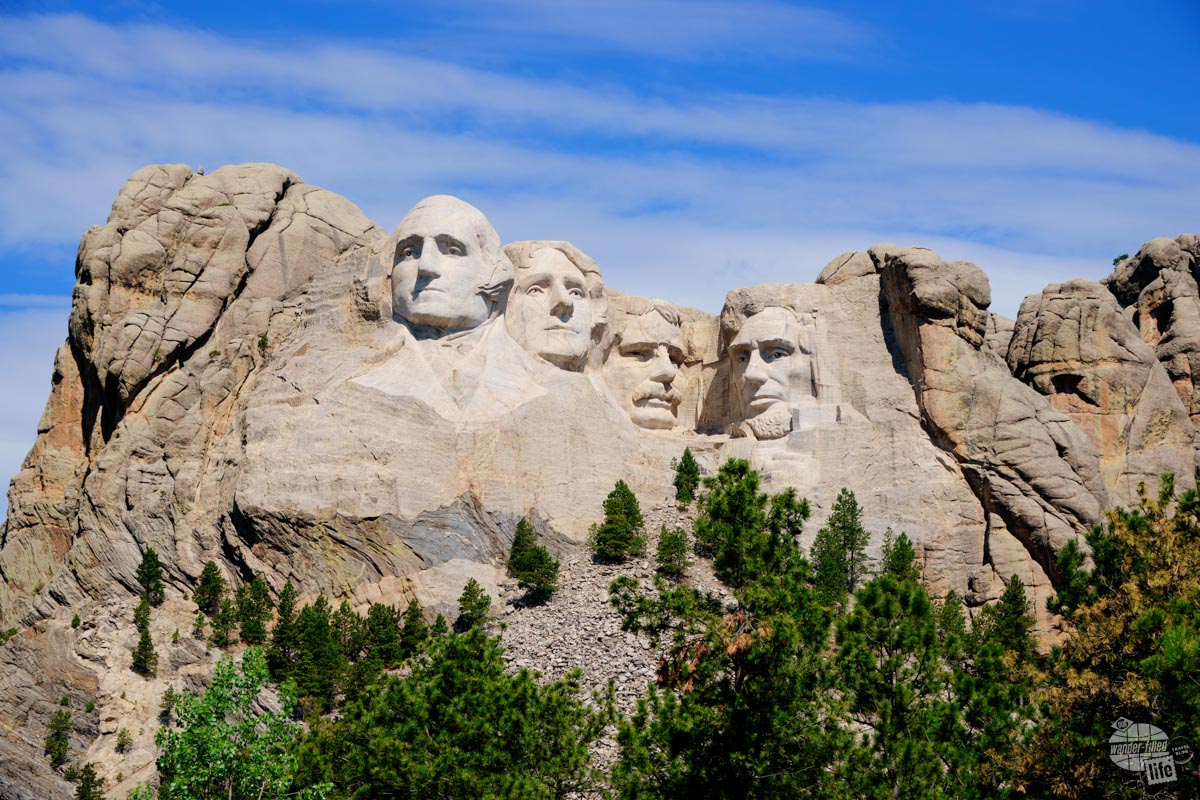
In the immediate vicinity, there are three national park sites that are just a short drive from Custer State Park. Mount Rushmore NM is just north of the park, connected by the scenic engineering marvel that is Iron Mountain Road. Adjacent to Custer State Park to the south is Wind Cave National Park. Jewel Cave National Monument is only about 20-30 minutes west.
Devils Tower National Monument is about two-hours northwest in Wyoming. About two hours to the east, you’ll find Badlands National Park and Minuteman Missile National Historic Site, near Wall, SD.
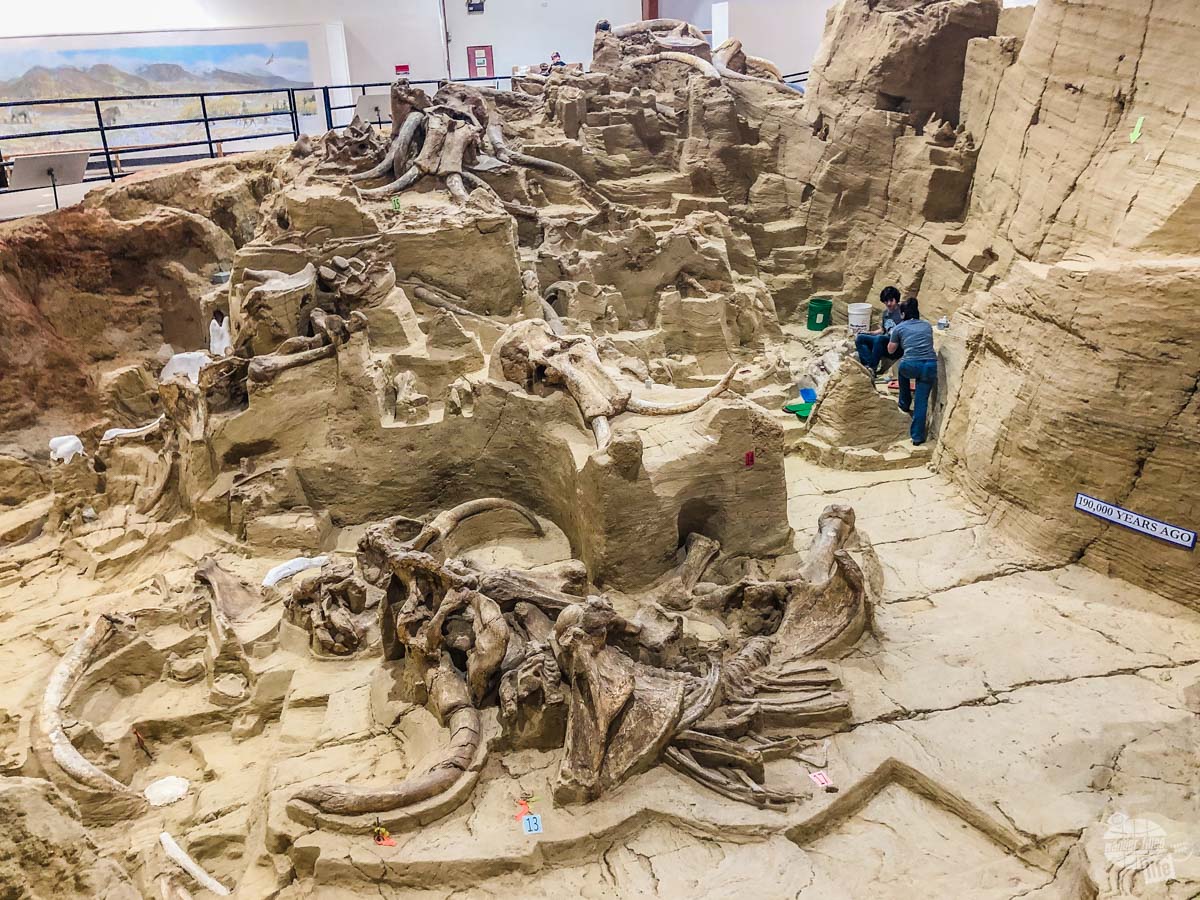
Additionally, the cities of Rapid City, Custer, Hill City, Hot Springs, Deadwood, Lead, Spearfish, Sturgis and Belle Fourche offer attractions and museums that appeal to a wide range of interests. You’ll also find quite a few restaurants, breweries, wineries and distilleries in the area.
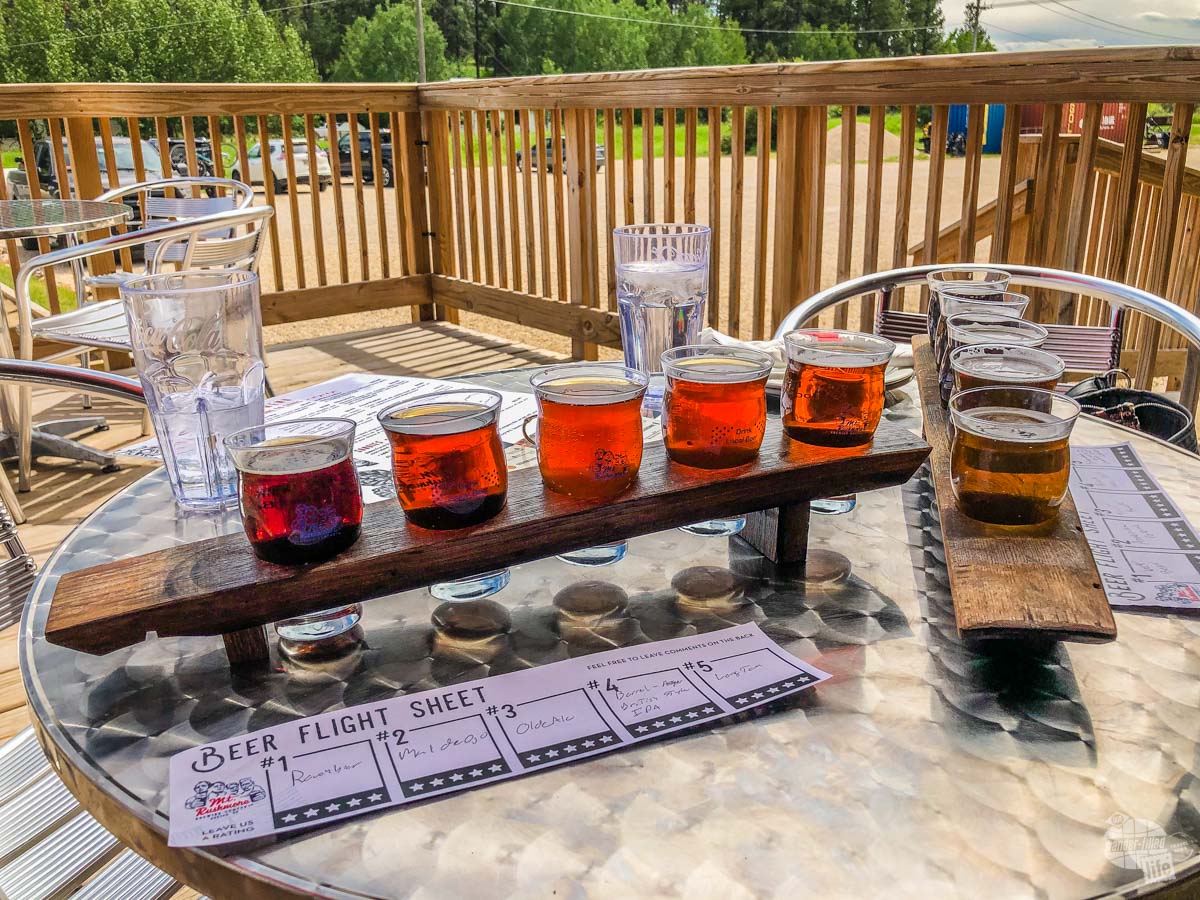
If you thought you were coming to the Black Hills just for Custer State Park and/or Mount Rushmore, you’re probably going to want to give yourself more time. Or just schedule another visit!
Check out our full guide to visiting the Black Hills.
Final Thoughts on Things to Do in Custer State Park
As you can see, there are plenty of things to do in Custer State Park. It certainly is not a park to just skip over or rush through quickly. There are scenic drives, wildlife viewing, hiking trails, water activities and plenty of lodging and dining options. Seriously, there is something for everyone.
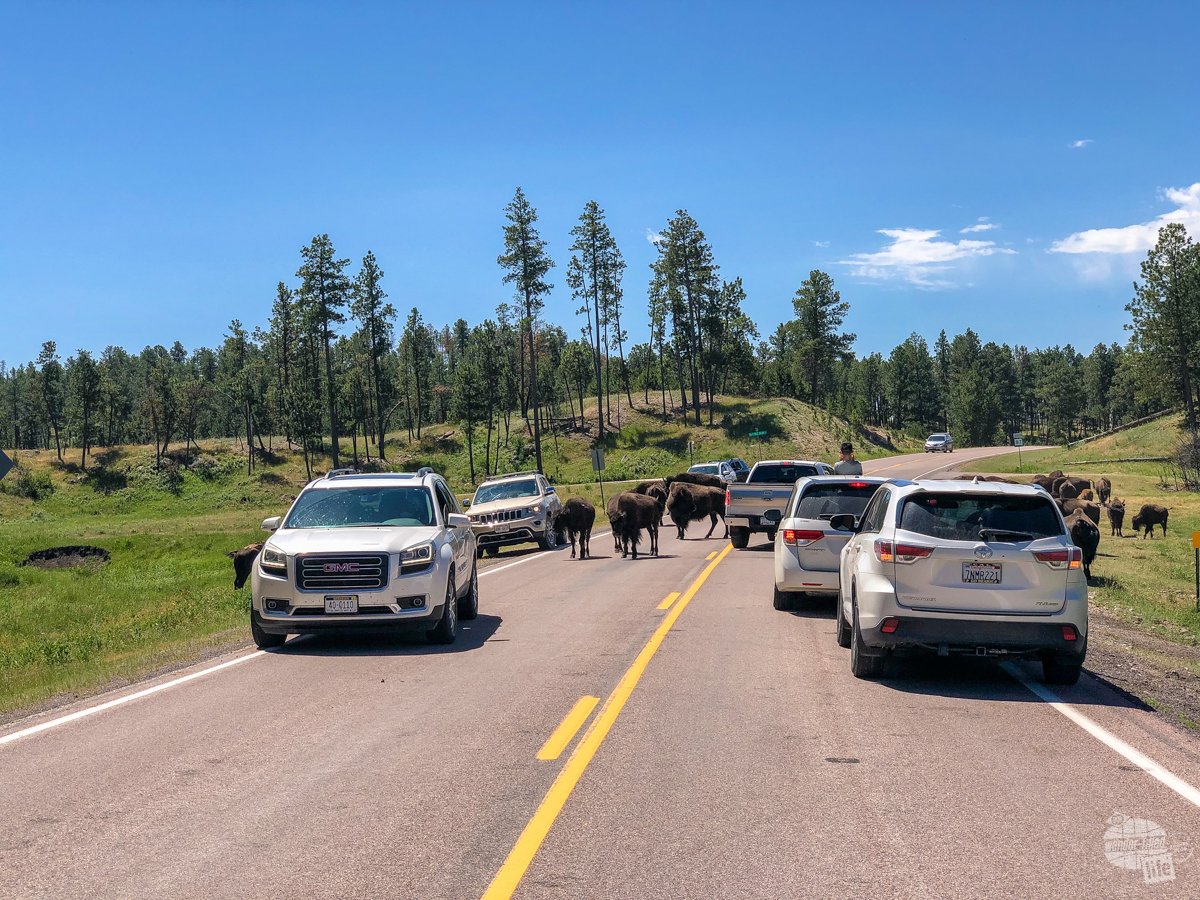
If you’re mostly interested in scenic drives and looking for wildlife, you can see the highlights in about a day. For those that want to do some hiking or enjoy some time at one of the many lakes, you’ll need at least two or three full days. Hopefully, though, you’ll add in even more time and visit some of the other great cities and attractions in the area.
During our three-week visit in the Summer of 2020, we spent several full days in the park and drove through many other times. There is just something about watching the bison herd and admiring the granite peaks and spires that never gets old.
Travel Resources
What do you use to find a flight?
We use Skyscanner to find deals on flights. Skyscanner has a great interface and compares tons of airlines for the best pricing and routing. That said, it does not always have every airline and some airlines will have better deals on their website. Still, Skyscanner is a great place to start.
Click here to search for a flight.
What do you use to find a hotel?
We typically stay at Hilton properties, so we use the Hilton website. You can find good Hilton Honors discounts or AAA discounts for a hotel there. We make great use of our free night certificates from our Hilton Honors American Express.
Click here to book a Hilton property.
If there are no Hilton properties available, we use TripAdvisor to read reviews and book the hotel. We find we can get the best price that way.
Click here to search for a hotel.
We recently partnered with Stay22 to add interactive maps to each of our destination posts. This will allow you to see a plethora of hotels and vacation rentals all in one responsive map of the area.
What if I need more space than I can get at a hotel?
We use Vrbo for the times when we have rented a cabin for a weekend getaway, like this cabin in Townsend, TN, or needed to rent a house for a large family vacation. We had a great experience with them in terms of refunding deposits when COVID hit and will continue to use them.
Click here to search for a vacation rental.
Who do you use for rental cars?
As a general rule, we book with Hertz for rental cars. We have had nothing but good experiences with them. Plus, we really like unlimited mileage and not worrying about crossing state lines. We have even rented from Hertz overseas in both Slovenia and Croatia.
Click here to book a rental car.
How about booking a cruise?
We have found some amazing prices for booking a cruise through Cruise Direct. We have saved a lot of money on our cruises compared to what we found elsewhere, making a last-minute Bahamas cruise even cheaper.
Click here to book a cruise.
What if I want to rent an RV?
We highly recommend Outdoorsy for RV rentals. We rented a camper van for a week to visit Rocky Mountain National Park for the elk rut and Custer State Park for the Buffalo Round-Up and had a blast. The program was easy to use and we really enjoyed the freedom of having a camper van for that trip.
Click here to rent an RV.
What do you use for booking tours?
We don’t often book tours. Typically, we like to do stuff on our own. That said, there are some experiences you can’t have any other way. So, when we do want to book a tour, we always check Viator first.
Click here to book a tour.
Do you use anything to get discounts on the road?
We make extensive use of both Good Sam and AAA on the road. Good Sam is normally regarded as a discount card for RVers at campgrounds and Camping World but anyone can use the 5 cents off a gallon at the pump at both Pilot and Flying J.
Click here to get a Good Sam membership.
We have had AAA as long as we have been married and it has more than paid for itself in discounts at hotels, aside from the peace of mind of having roadside assistance. Add in paper maps and the ability to get an international driver’s license and it is more than worth it for any traveler out there.
Click here to get a AAA membership.
